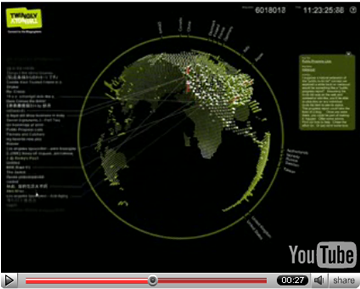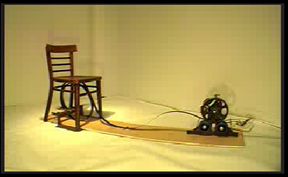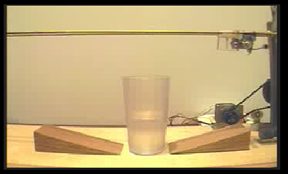April 15, 2007
Turbulence Commission: The Simultaneous Translator

ONLINE Performance Today
Turbulence Commission: The Simultaneous Translator by John Roach and Willy Whip [Requires Windows OS] LIVE PERFORMANCE: Sunday April 15; 12:00 PM EST to 3:00 PM EST [Mac users can listen via the player of their choice].
"The Simultaneous Translator" (SimTrans) is a Windows based audio interface that enables anyone to load audio streams and manipulate them in real time on the Internet. SimTrans makes the delays and fluctuations of the Internet visible and audible. The Internet becomes your collaborator as you create your mix, and the instability you usually try to avoid becomes a tool for creation. Distance and delay are manifest within the interface numerically and as a series of sliding heads; there is also a link to Google Earth where you can watch the dynamic flight of data travel between yourself and the audio source.
“SimTrans” is a 2007 commission of New Radio and Performing Arts, Inc., (aka Ether-Ore) for its Turbulence web site. It was made possible with funding from the Murray G. and Beatrice H. Sherman Charitable Trust.
THE PERFORMANCE: "The Simultaneous Translator" grew out of the artists’ live networked performance project "Simultaneous Translation," in which the delays of the internet are used to dynamically effect the live performances of geographically distant artists.
The upcoming performance will take place from 12:00 PM EST to 3:00 PM EST on Sunday April 15. Log on via http://turbulence.org/Works/simtrans.
Participants: Greg Davis (USA), Kenneth Goldsmith (USA), John Hudak (USA), Keyman (France), Lawrence Li (China), Mice69 (France), Miguel Ramos (Spain), Joe Reinsel (USA), John Roach (USA) and Willy Whip (France).
BIOGRAPHIES
JOHN ROACH doesn't consider himself an installation artist, a sound artist, or a sculptor, but prefers to think of himself as a nomad, touching down in whatever place is most hospitable to his ideas. Recent projects have been an installation at the 2B Gallery in Budapest, Hungary; a collaborative performance with objects and video at the Saint Stephen Museum in Szekesfehervar, Hungary; and a web video project called Sweet Music. He continues to work with Willy Whip on their long-standing live networked performance project Simultaneous Translation.
WILLY WHIP is a designer and teacher in hypermedia interactivity. Outside his institutional work he likes to produce mashups that fertilize his own secret garden. This personal research and development leads him on a quest for hybrids: connect this information to that information; grow new contents; release new senses. Recent activity includes projects with the artists Anika Mignotte, Reynald Drouhin, and Du Zhenjun.
Posted by jo at 11:55 AM | Comments (0)
April 13, 2007
spring_alpha
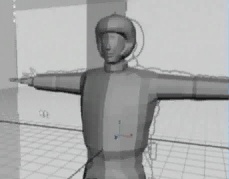
Rewritable on both the Narrative and Code Level
spring_alpha is a networked game system set in an industrialised council estate whose inhabitants are attempting to create their own autonomous society in contrast to that of the regime in which they live. The game serves as a "sketch pad" for testing out alternative forms of social practice at both the "narrative" level, in terms of the game story, and at a "code" level, as players are able to re-write the code that runs the simulated world ... 'spring_alpha' is a game in permanent alpha state, always open to revision and re-versioning. Re-writing spring_alpha is not only an option available to coders however. Much of the focus of the project lies in using game development itself as a vehicle for social enquiry and speculation; the issues involved in re-designing the game draw parallels with those involved in re-thinking social structures. [via]
Posted by jo at 07:15 PM | Comments (0)
April 10, 2007
Turbulence Commission: The Simultaneous Translator
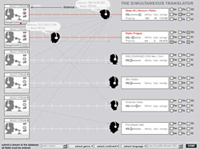
Live Performance on April 15
Turbulence Commission: The Simultaneous Translator by John Roach and Willy Whip [Requires Windows OS] LIVE PERFORMANCE: Sunday April 15; 12:00 PM EST to 3:00 PM EST
The Simultaneous Translator (SimTrans) is a Windows based audio interface that enables anyone to load audio streams and manipulate them in real time on the Internet. SimTrans makes the delays and fluctuations of the Internet visible and audible. The Internet becomes your collaborator as you create your mix, and the instability you usually try to avoid becomes a tool for creation. Distance and delay are manifest within the interface numerically and as a series of sliding heads; there is also a link to Google Earth where you can watch the dynamic flight of data travel between yourself and the audio source.
“SimTrans” is a 2007 commission of New Radio and Performing Arts, Inc., (aka Ether-Ore) for its Turbulence web site. It was made possible with funding from the Murray G. and Beatrice H. Sherman Charitable Trust.
THE PERFORMANCE: The Simultaneous Translator grew out of the artists’ live networked performance project "Simultaneous Translation," in which the delays of the internet are used to dynamically effect the live performances of geographically distant artists.
The performance will take place from 12:00 PM EST to 3:00 PM EST on Sunday April 15. Log on via http://turbulence.org/Works/simtrans.
Participants: Greg Davis (USA), Kenneth Goldsmith (USA), John Hudak (USA), Keyman (France), Lawrence Li (China), Mice69 (France), Miguel Ramos (Spain), Joe Reinsel (USA), John Roach (USA) and Willy Whip (France).
BIOGRAPHIES
JOHN ROACH doesn't consider himself an installation artist, a sound artist, or a sculptor, but prefers to think of himself as a nomad, touching down in whatever place is most hospitable to his ideas. Recent projects have been an installation at the 2B Gallery in Budapest, Hungary; a collaborative performance with objects and video at the Saint Stephen Museum in Szekesfehervar, Hungary; and a web video project called Sweet Music. He continues to work with Willy Whip on their long-standing live networked performance project Simultaneous Translation.
WILLY WHIP is a designer and teacher in hypermedia interactivity. Outside his institutional work he likes to produce mashups that fertilize his own secret garden. This personal research and development leads him on a quest for hybrids: connect this information to that information; grow new contents; release new senses. Recent activity includes projects with the artists Anika Mignotte, Reynald Drouhin, and Du Zhenjun.
Posted by jo at 09:20 AM | Comments (0)
April 03, 2007
Hidden Lives
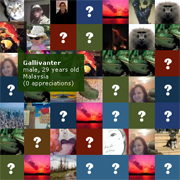
A Social Experiment
Everyone leads two lives. An 'outer' life filled with day-to-day activities and to do's. Jobs, routines, meals, meetings, bills, discussions about the weather. And then there is the 'inner' life. The things that you think but seldom say. Hidden Lives is a space to reflect on your innermost thoughts, dreams, hopes, fears and imaginings. Pause, let your soul drift, listen and then reveal your hidden life to the world. Hidden Lives aims to become a unique global artwork brimming with intimate, beautiful and moving self-expressions from people all over the world.
Hidden Lives, by Justin McMurray and Remko Steenstra, is a social experiment dabbling in the realms of authentic expression and intimate revelation. The website responses are uniquely personal and yet undeniably universal. When people have the opportunity and courage to share their hidden lives, it is a powerful reminder that, for everything that separates us, we are all intimately connected. Play around and see what lives are unveiled. Unveil your hidden life today.
Posted by jo at 09:47 AM | Comments (0)
February 24, 2007
Do It With Others (DIWO): E-Mail-Art at NetBehaviour

A Collaborative Exhibition at HTTP Gallery, London
Hi DIWOists,
The Furtherfield crew has been discussing ways to get the most out of the co-curating session on Sunday when we will discuss and experiment with ways of exhibiting the contributions at HTTP gallery (don't forget the opening is next Thursday).
Other known contributors to this process in the gallery on Sunday are Frederik Lesage and james[at]jwm-art.net, others are welcome. Please check back with the list at 1.30 on Sunday for details of thewebcast and public chat room where you can join the discussion online. Until then you can view a gallery floor plan and tech spec here.
So here is a summary of our considerations, proposals and a number controversies for your feedback!
CONSIDERATIONS:
1) How to Survey the Contributed Materials for the Curation Process: There have been over 600 posts to NetBehaviour since the start of this project and we have 2-5pm on Sunday to review and discuss how to present contributions. The main ways that we have for looking at work is:
- through our mailboxes
- through an index of attachments that can be view browser here
Your Suggestions Please: We would like your suggestions for any other (reasonably straight forward) way to order materials for review.
2) Categories - How to Order and Discuss Materials.
It would be useful to have some broad themes or categories to discuss. Here are a couple of possible categories with examples (and these really are just examples) of what we mean.
- Threads - discussions, exchanges, actions and responses eg Sachiko Hayashi's 'The Other Half',
- Collaborations and remixes eg RandomLab's reblogging and remixing, Michael Szpakowski's remix of Thomson and Craighead's 'Additions' image
- Digital becomes Material eg Sim Gishel has sent a 'Will Work For Food' vehicle, brian[at]netartguy's currency could be laser-printed as actual currency, Other works proposed for print, Other works actually sent to HTTP etc
- Proposals/ Instructions- eg Ant Scott's installation proposal, Glorious Ninth's Love Potions
- Generative/machine Art- eg. Sim Gishel's data-mining, ARN's generative pngs
- Stand alone streams - movies, soundfiles and images eg images by Clive McCarthy, lem urtastic - movies by Lizzie Hughes, Alan Sondheim - mp3s by james[at]jwm-art.net
- Texts eg Janedepain's recent 'Poetic Terrorism and Guerrilla Art in the 21st Century' and technical discussions.
PROPOSALS:
1) We propose that the main projection consists of a Mailbox containing a DIWO archive for searching by gallery visitors. This would be organised into themed directories that would coincide with the categories listed above. PLEASE SUGGEST: more or other categories.
2) We propose that we highlight and exhibit some 5-8 works (made by individuals or collaboratively) in the form of objects, printouts, projections and sound. These would be up for discussion and debate from this point - to be decided on Sunday.
CONTROVERSIES:
1) The question of selection - how do we create an exhibition in a physical space that communicates the DIWO spirit?
- how do we highlight a selection of works?
- how do we stay true to the open principle of including all submissions?
2) Contextualisation
- do some works need contextualising in order to be accessible to gallery visitors eg should some works be displayed with titles, artist, date, materials, description of process etc?
- if so how, and who does it?
3) Is everything that has been posted to NetBehaviour since February 1st considered a submission to DIWO?
- including announcements and reblogging?
4) A number of people have proposed works in private emails to Marc or myself- should these be included under the rules of submission?
Whoever wants to contribute to the curation of this show- share your views here on the list or come along on Sunday ttp://www.http.uk.net/DIWOcurating.shtml
Let's DIWO!
: ))
Ruth [via netbehaviour]
Posted by jo at 12:01 PM | Comments (0)
February 22, 2007
Turbulence Spotlight
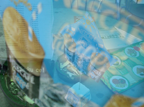
"Zeno Boundary" by Kevin Hamilton
Turbulence Spotlight: Zeno Boundary by Kevin Hamilton :: "Zeno Boundary" collects portraits of places regarded as public, created according to a prescribed photographic system. Images uploaded by contributors are dynamically animated into a looped sequence of pans and zooms through the space. The project originated in Spring 2006 as part of the Mobile Studios project, in cooperation with curators of the 13 Kubikov collective in Bratislava, Slovakia. After touring with Mobile Studios through Eastern Europe, the project continues as part of the 2007 Depauw Biennial Exhibition, in Greencastle, Indiana.
Kevin Hamilton currently teaches at the University of Illinois, Urbana-Champaign, where he is appointed to the Painting/Sculpture and New Media programs. Recent work has included co-organization of a symposium series about Walking, and the creation of interactive artworks for gallery and public settings. His scholarship includes research on manifestations of absence in contemporary and historical telecommunication technologies, and development of new methodologies for interdisciplinary collaboration. Kevin has exhibited or lectured at festivals and art institutions in Spain, Holland, Slovakia, Hungary, Canada, and the United States.
Posted by jo at 06:10 PM | Comments (0)
February 20, 2007
The Wreckers:
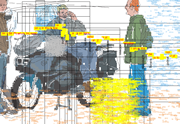
public looting becomes public art
The Wreckers: public looting becomes public art (that loots the Internet): The Wreckers, by Daev Miller, is an online tool that pulls (or loots) RSS feeds and user comments from the Internet into a computer script, mixes them together, splits them up and converts into shapes and lines. The more user comments entered, the richer the work becomes. Miller's own illustrations are pulled into this mix, and finally the computer script outputs a drawing. This computer output is what he'd describe as a collaborative debate 'mashup' drawing. People's thoughts and arguments are turned into almost random patterns, with just little hints of meaning. Like a conversation out of earshot.
The core of Miller's work is illustrated stories: satirical and socio-political - using traditional media as well as online and networked media. His works aim to exploit the online medium, especially: collaborative, networked, computer generated. The Wreckers is a progression of his past recent works which integrate networked data into stories and illustrations.
Please see Miler's blog for further details of his work. email: dave.miller.uk[at]gmail.com. Related 1, 2.
Posted by jo at 03:56 PM | Comments (0)
February 19, 2007
Twingly Screen Saver
Twingly Screen Saver is visualizing global blog activity in real time. Download!
Posted by jo at 06:33 PM | Comments (0)
January 31, 2007
TurntablistPC

CALL FOR PARTICIPATION
TurntablistPC – CALL FOR PARTICIPATION :: The Art Museum of West Zealand invites you to participate in TurntablistPC, an internet-connected physical art installation by artist Mogens Jacobsen on show now at the museum through April 9th 2007. You can participate via your website from today on (please see below).
We are seeking the participation of websites from as many different countries as possible, so please forward this message to other interested parties.
WHAT IS TurntablistPC? TurntablistPC is a telematic hybrid of a turntable (a grammophone) and an old personal computer. Installed in the museum space, the TurntablistPC will play a vinyl record whenever someone visits one of the participating websites around the world, including your website. A video projection of a world map will show where the participating party is from, thus generating a map of global, remote participation for the local visitors in the museum space.
HOW CAN YOU PARTICIPATE? All we need is a “counter-hit” from your website, telling us that someone has visited your website (a hit). The counter-hit can be automatically generated by following a simple step – please place the following small snippet of HTML-code at the bottom of the most visited page of your website:
NOTE: Only use this code if your position is EAST of the city of Sorø, Denmark (11.5561 East / +11° 33’ 21.96”):
NOTE: I HAD TO MAKE IMAGES OF THE CODE FOR IT TO APPEAR. DO NOT USE THESE IMAGES; JUST TYPE THE CODE:
![]()
If your position is WEST of the city of Sorø, Denmark (11.5561 East / +11° 33’ 21.96”) please use this code:
![]()
This is the exact code to be included depending on your position. We will need your participation already for the set-up of the installation, so please act now.
We kindly ask you to notify us of your participation by sending an email to curator Andreas Brøgger at ab[at]vestkunst.dk with the subject line “turn”. Please also state in which country your website is registered/hosted.
The image and the code should remain on your site throughout the exhibition period (i.e. until April 9 2007).
TECHNICAL INFORMATION
The code places a tiny “invisible” image (a transparent GIF-image) on your website. Neither the image nor the HTML–snippet will interfere with the appearance of your website nor with the visitor’s experience. The code and the image are a mere 700 bytes (0.7Kb) in total. Participation does not pose any security risk whatsoever, nor is any personal or otherwise sensitive information stored.
MORE INFO
Mogens Jacobsen is a Danish artist who has exhibited widely in Sweden, Finland, Germany, Austria, France, Spain, Japan, Brazil.
More info on TurntablistPC at www.turntablistpc.info.
TurntablistPC is part of WEBSCAPE – ART IN THE VIRTUAL LANDSCAPE, a series of exhibitions of netbased, physical installations at the Art Museum of West Zealand 2006-2007.
Posted by jo at 11:25 AM | Comments (0)
January 24, 2007
RPM's Remixed
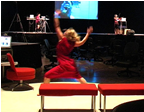
A Virtual Space "Sings"
RPM's Remixed is a telematic, transdisciplinary performance based on remixing Alvin Lucier's RPM's score – integrating dance, video and sound improvisation between artists in New York, Tampa, and San Jose.
Alvin Lucier, a well-known composer of music and sound installations that explore natural phenomena and resonance, is renowned for making spaces "sing." This piece explores the possibilities of using one of his scores to make a virtual space "sing" by using improvisational techniques as well as the natural feedback and delay created by streaming.
Themes exploring isolation, intersection, and madness reverberate through images, body and sound. Dancers and sound artists in San Jose, Tampa, and New York collaborate while realtime processing of the video images is driven partially by the performers’ movements. Motion analysis is sent over the network to trigger aspects of video manipulation, further blurring the lines of authorship and contributing to the impromptu chemistry.
Lucier’s original “RPM’s” score was a tongue-in-cheek take on creating sound based on depressing and releasing the accelerator of an Aston Martin engine. The score itself is a series of nonsensical curvatures and dashes – nonsensical, that is, until a personal interpretation of each written gesture is applied.
Taking this a step further, the cast of RPM’s Remixed deconstructs the score, into dance gestures, violin strokes, guitar riffs, and sound and video mashing. The challenge is not only to collaborate within one’s own medium but to improvise successfully between mediums and within a virtual space. Can the magic of improvisation reach across the ether? [via Rhizome]
Posted by jo at 09:33 AM | Comments (0)
January 23, 2007
The Electric Sheep Screen-Saver

A Collective "Android Dream"
Electric Sheep is a free, open source screen saver run by thousands of people all over the world. It can be installed on any ordinary PC or Mac. When these computers "sleep", the screen saver comes on and the computers communicate with each other by the internet to share the work of creating morphing abstract animations known as "sheep". The result is a collective "android dream", an homage to Philip K. Dick's novel Do Androids Dream of Electric Sheep. Anyone watching one of these computers may vote for their favorite animations using the keyboard. The more popular sheep live longer and reproduce according to a genetic algorithm with mutation and cross-over. Hence the flock evolves to please its global audience. You can also design your own sheep and submit them to the gene pool. [via]
Posted by jo at 05:57 PM | Comments (0)
January 22, 2007
Dear Internet v1.
![]()
Networked Technologies and the Paradoxes of Social Relations
In preparation for an upcoming exhibition at Maryland Art Place (MAP) Dear Internet --a project by Mark Cooley and Edgar Endress--will be accepting letters via Dear Internet. Dear Internet v1. investigates how networked technologies become platforms for the paradoxes of social relations in digital culture. Connection, fear, communication, alienation, interactivity, dislocation, intimacy, disembodiment, are all possible and often simultaneously present in our attempts to interact with others online and off.
The installation: A live screening of Dear Internet develops, with the help of participant input, over the course of the exhibition and serves as a partial expression of networked consciousness. Content for Dear Internet v1. is collected from 2 primary sources:
- A participatory blog that forms a collective memory of "users" experience in networked living. Dear Internet (the blog) is an unmoderated site for the publishing and archiving of letters written by Internet users concerning their relationships with the Internet. Through http://dearinternetuser.blogspot.com, users may address the internet directly and indulge in their deepest thoughts, feelings and fantasies with the abandonment, comfort and protection that only online anonymity can provide. Texts gathered from http://dearinternetuser.blogspot.com are remixed and projected in the gallery while they are read with text to speech software.
- Live IP surveillance cameras are accessed using a variety of well-known advanced google search techniques and projected in the gallery space. While these surveillance cameras are accessible to any internet user, they remain largely unknown to casual internet users. However, the cameras have attained significant attention from hackers, technophiles, security professionals, bored surfers and others. The interest no doubt comes from the common presumption that these surveillance cameras are left unsecure unintentionally by camera owners who have neglected to set-up camera security features. Internet users are often able to access full control of an accessed camera's, zoom, pan, snapshot and other features. Camera controls are removed from the interface for the Dear Internet installation and the cameras are set to refresh every 30 seconds.
Posted by jo at 02:24 PM | Comments (0)
December 19, 2006
ebayaday

NEW AMERICAN DICTIONARY
L@@K!! Terms For Sale on EBAY for the NEW AMERICAN DICTIONARY!!! Browse through eBay between Friday, December 1st and 31st, 2006 and you may stumble upon one of twenty-five artists' auctions. All exist under the umbrella of ebayaday, a serial exhibition (one auction debuts each day) of artworks in the form of auctions. Each listing was created for the online marketplace and uses the entire listing -- item for sale, online identities, desriptive text and imagery, as well as the nomenclature of eBay's categories -- as elements in the work.
The New American Dictionary (Security/Fear Edition): The right to define words is power. You can buy power :: For ebayaday, the Institute for Infinitely Small Things is publishing THE NEW AMERICAN DICTIONARY, a compilation of new terms by and for Americans in the new millenium. This dictionary is uniquely democratic: YOU get to define the most important new words in it by purchasing them on eBay!
EXCLUSIVE until Dec 24th! Bid Now for as low as $0.95!! [view all on eBay]
ALERT
AXIS OF EVIL
COALITION OF THE WILLING
EMBEDDED JOURNALIST
EXIT STRATEGY
FRIENDLY FIRE
PREEMPTIVE WAR
TERROR
TORTURE
UNMARKED PACKAGE
Ebayaday artists: Conrad Bakker, Matthew Bryant, Carl Diehl, Karen Eliot, Charles Fairbanks, Marc Ganzglass, Josh Greene, Abhishek Hazra, Ellen Harvey, Christine Hill / Volksboutique, Nancy Hwang, Institute for Infinitely Small Things, Robin Kahn, Osman Khan, Sheryl Oring, William Pope L., Dan Price, REBAR, John Roos, Davy Rothbart, Yashas Shetty, Slop Mountain College faculty, Adriane Herman & Brian Reeves, Nick Tobier, Annie Varnot.
Posted by jo at 03:32 PM | Comments (0)
December 06, 2006
JOIN KUNSTRADIO'S
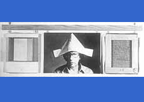
Celebration of Art's Birthday
INVITATION TO JOIN KUNSTRADIO'S CELEBRATION OF ART'S BIRTHDAY 2007! ::Art’s Birthday 2007: Adore and be still ::100 years of radio
Art's Birthday Party is a celebration in memory of Robert Filliou who declared, on January 17 1963, that Art had been born exactly 1,000,000 years ago when someone dropped a dry sponge into a pail of water. After Filliou's death in 1987, some artists began to celebrate Art's Birthday in the spirit of his concept of "The Eternal Network" or "La Fete permanente". The Birthday parties took place in different cities across the world, and artists were asked to bring birthday presents for Art – works that could be shared over the network.
On Christmas 1906, on the other hand, Reginald Aubrey Fessenden undertook the very first radio broadcast of voice and music. Luckily, he had the foresight to time his experiment exactly, its 100th anniversary practically coinciding with the 1,000,044th birthday of Art. We therefore ask you to join Kunstradio's celebration of this stunning fact. We invite you to search your own territories for further firsts in radio history. Premieres of different kinds; the first transmission in stereo, the start of a series of brilliant shows, the first time you listened to the radio, the first time they played 'your' song, the first time you were broadcasting, were on air.
Soundfiles of these broadcasts we ask you to upload to our website.
Feeding on your individual sonic archives and this database of numerous people's special radio moments you can then assemble your own radiophonic versions of our medium's history. These we invite you to stream to our party in Vienna on January 17th, 2007. We will re-mix and further distribute your streams via our live Kunstradio broadcast on the cultural channel of Austrian National Radio Ö1,as well as in our slot on the EBU satellite.
Should you have any questions, please do not hesitate to contact us under kunstradio[at]kunstradio.at
Please feel free to spread the word! This is the party you can bring along as many people as you like!
The short version:
What do we want?
A present. Not for us, for Art's birthday.
Which present?
Your radio's history. Or: Your history of radio.
How?
Streamed, mailed, sent, posted, uploads at
http://kunstradio.at/PROJECTS/AB2007/index.html
Format?
mp3 files, live-streams, images, webcams, ..
When?
January 17th, 2007 from 20:00 - 24:00 CET, 19:00 - 23:00 GMT
Why?
To celebrate.
What?
Art's Birthday.
Posted by jo at 04:34 PM | Comments (0)
November 08, 2006
Rosalind - Upstart Media Art lexicon

Needs to be Fed
Rosalind - Upstart Media Art lexicon :: Feed Rosalind with your own words and definitions to express and declare what you are, what you do and the worlds you create, on your own terms. Influence and mutate her, help her to maturity. Your words may: - describe something very particular to your life / experience / work - be invented in a moment of desperation - arise in conversation with others - already be in circulation. Examples:
mociology :: The study of the effect of mobile technology and ubiquitous networks on our social interactions. A combination of mobile and sociology. An important term in the rising world-network that we're all blips in the midst of. Reference : rockngo.org/archives/2006/01/mociology.html :: Added by Jon Beardsley.
Mail listlessness :: Anxiety and ennui due to overwhelming list mail in inbox as a consequence of phobic sense of missing something which is not there :: Added by Patrick Simons.
Glass Roots :: An unacknowledged discriminatory barrier that prevents those minorities privileged by class or financial resources from accessing the source of distributed power or responsibility, as exists within a local community :: Added by ruth catlow.
Alpha Revisionism :: Promoting or 'selling' an audience on a concept/product in nascent (possibly premature) stages in order to create popular sentiment & hype about A given idea, product, or action :: Added by Patrick Lichty.
Telememetics :: Study of how memes transmit over networks, what effect the existence and use of networks has on the spread and uptake of memetic infection I invented the word, it is itself a meme. Reference : www.telememetics.com :: Added by ivan007.
Anna Karenin Function :: A function which returns zero on success and a variety of error codes otherwise source:Zack Booth; Inspired by the first line of Tolstoy's Anna Karenin ("Happy families are all alike; every unhappy family is unhappy in its own way.") i.e. all happy function calls are alike, every unhappy function call is unhappy in its own way :: Added by maya.
D.I.W.O (Diwo's, or Diwo groups) :: Expanded from the original term known as D.I.Y. (Do It Yourself). D.I.W.I.O 'Do It With Others'. Is more representive of contemporary, collaborative - art practice which explores through the creative process of using networks, in a collective manner :: Added by Marc Garrett.
Netropy :: Propriety that implies that through time, the Internet is forced to always become more and more chaotic :: Added by Clemos.
Catechstrophy - a disastrous technology problem or breakdown, particularly used in the context of live art, performance or installation which involves computers :: Added by Neil Jenkins.
Parasitic Media :: "The parasite is the mystical computer glitch. The parasite is the bandwidth thief. The parasite is the invisible usurper. The shift that takes place in the host, if any, is one so gradual the parasite will be able to feed and thrive without detection. The invisibility of the parasite is only through the eyes of its host organism." Reference : www.carbondefense.org/writing_7.html - :: Added by Ryan griffis.
gxxgle - verb- (to gxxgle) :: To search for a search engine that fights censorship in the face of shareholder greed or state pressure. That doesn't contribute to the development of technology used to implement state firewalls see Reporters Without Borders :: Reference: furtherfield.org/boycott.html :: Added by Rosalind. [from netbehavior]
Posted by jo at 11:17 AM | Comments (0)
November 03, 2006
THE WISHING TREE
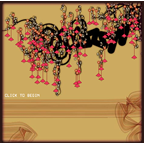
Blends the Cutting-Edge with the Ancient
THE WISHING TREE: Boredom Research, a leading artist duo from Bournemouth have constructed an innovative interpretive new forum. Visitors to the website of Lancaster digital arts organisation folly will be among the first in the world to use the new generation of online forum.
The new message-board interface is based not on text, but is an interactive digital drawing of a "Wishing Tree". The inspiration is from the Lam Tsuen Wishing Trees in Hong Kong where visitors make a wish by writing it on yellow paper which they tie to an orange. They then throw it up high into the wishing tree and try their luck at getting it to hang on one of the branches. If the wish hangs in the tree it will come true; if not the myth claims you have made your wish too greedy.
The message board Java applet f.wish faithfully reproduces the process of creating and throwing one's wish into the tree. Users are also able to virtually tug other people's messages off of the tree to read and respond to them.
"The whole interface is beautiful and creates a new kind of experience for the web" said folly's Artistic Director Kathryn Hughes. "With f.wish, we have attempted to reinterpret the notion of the message board to inspire our users to reflect more fully on their online communication."
The project is also being augmented by the distribution of Chinese fortune cookies, which hold paper messages directing people to the site.
boredomresearch are Southampton-based Vicky Isley and Paul Smith. They interrogate the creative role of computing, producing beautifully crafted software art that presents a fresh approach to our technologically fraught lives. The duo are interested in engaging communities online through contemplative and rewarding experiences.
Posted by jo at 09:04 AM | Comments (0)
November 01, 2006
The Library Project:
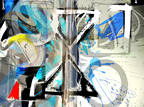
A Networked Art Experiment
As he recently reflected upon here, Alex Itin has long been working at the border zones of art forms, moving in recent years to the strange intersection of paint and pixels. His blog is one of the most wildly inventive uses of that form, combining blazing low-res images of his paintings with text, photographs, short films, animated GIFs and audio mashups. All of this is done within the constraints of the blog's scroll-like form -- a constraint which Alex embraces, even relishes. I sometimes imagine the scroll endlessly emitting from Alex's head like tape from a cash register, a continuous record of his transactions with the world.
ITIN place has been on the web for nearly two years now. In his second year, Alex began to explore new avenues out of the blog, establishing a presence on social media sites like Flickr, YouTube, Vimeo (a classier YouTube) and MySpace. Through these networked rovings, Alex has found a larger audience for his work, attracting new "readers" back to the blog where the various transmitted videos and images are reassembled in the scroll. He's also established relationships with a number of other artists making interesting use of the web, particularly on Flickr and Vimeo. Recently, Alex invited a number of folks from the Flickr community to participate in a collaborative art project -- a kind of exquisite corpse game via post. Here's Alex:
The idea is that one artist takes a hardcover from a book, tears out the pages and draws in one half (or half draws in both halves) of the binder/diptyque. In a nod to Ray Johnson, the two books are mailed (swapped) and Each of these will be finished by the other. The results are posted in a Flicker group called (what else) The Library Project. From this group, hopefully a show will be curated for New York, or Paris, or Basel, or Berlin, or wherever anyone wants to show this project. It should be deliciously portable... get working...get collaborating...get reading!
As of this writing, the Library has racked up 278 members and has 205 images in its pool. A few of these are collaborations that have already made their trek across land, sea and air, others are purely digital combinations, while still others are simply book-inspired works submitted in the spirit of the project. More >> [posted by ben vershbow on if:book]
Posted by jo at 06:48 PM | Comments (0)
Turbulence Commission:

[meme.garden]
Turbulence Commission: [meme.garden] by Mary Flanagan, Daniel Howe, Chris Egert, Junming Mei, and Kay Chang :: [meme.garden] is an Internet service that blends software art and search tool to visualize participants' interests in prevalent streams of information, encouraging browsing and interaction between users in real time, through time. Utilizing the WordNet lexical reference system from Princeton University, [meme.garden] introduces concepts of temporality, space, and empathy into a network-oriented search tool. Participants search for words which expand contextually through the use of a lexical database. English nouns, verbs, adjectives and adverbs are organized into floating synonym "seeds," each representing one underlying lexical concept. When participants "plant" their interests, each becomes a tree that "grows" over time. Each organism's leaves are linked to related streaming RSS feeds, and by interacting with their own and other participants' trees, participants create a contextual timescape in which interests can be seen growing and changing within an environment that endures.
The [meme.garden] software was created by an eclectic team of artists and scientists: Mary Flanagan, Daniel Howe, Chris Egert, Junming Mei, and Kay Chang.
[meme.garden] is a 2005 commission of New Radio and Performing Arts, Inc., (aka Ether-Ore) for its Turbulence web site. It was made possible with funding from the Warhol Foundation for the Visual Arts. Additional support from the PSC-CUNY research fund.
Posted by jo at 04:18 PM | Comments (0)
Participate in
Nothing Happens, Act 3
in which a chair falls....
Posted by jo at 09:52 AM | Comments (0)
October 23, 2006
Participate in
Nothing Happens, Act 2
in which a glass of water tips over....
Posted by jo at 08:27 AM | Comments (0)
October 16, 2006
Oppera Internettikka - Protection et Sécurité
![]()
FearingS
What is fear? Why should you be afraid? What, who is to fear? Where does your fear come from? Participate in creating a collective voice about "fear". Help reveal its actual tendencies.
FearingS is a part of the project Oppera Internettikka - Protection et Sécurité by Annie Abrahams & Igor Stromajer.
Oppera Internettikka - Protection et Sécurité explores the poetics of a contemporary sound form -- live opera as a sound event for the audience in the form of a live internet audio broadcasting. In that way it combines the notion of the world wide web communication protocols and classical artspace -- an opera house. Opera is a very strictly coded form of art with a lot of passion, and internet is a lonely place of solitude and intimate communication which is becoming more and more fragile, dangerous and suspicious.
The theme of the project is security and protection, which refers both to private and personal safety issues in the present post-WTC world of high and intense but questionable security measures and to the internet as a global and therefore extremely vulnerable and unstable communication tool.
Three artists with specific roles (artist Annie Abrahams as mutter courage, intimate mobile communication artist Igor Stromajer as bigbrother and professional opera singer as French secret service agent) are performing a complex structure combined of sounds, voices, noises, internet audio files and sound-manipulating machines and are using these sounds to perform/sing/reproduce a story for the audience present in the opera house, and for those following the audio part of the project live on the internet worldwide.
The libretto for the opera is composed out of three sources -- mutter courage is using the texts written and proposed in advance by the online visitors, bigbrother's only lyrics comes from a web search engine which he is manipulating in realtime, and the secret service agent is singing the HTML source code (Hypertext Markup Language - the authoring software language used on the internet's world wide web for creating world wide web pages) and Java scripts (JavaScript is a script language - a system of programming codes that can be embedded into the HTML of a web page to add functionality) from specifically selected French secret service web sites, openly available on the internet.
It is a new media project filled with abstract emotions, created in a valuable tradition of Bauhaus musical theater mixed with Dada, sound poetry and contemporary digital means of expression. Therefore the location of L'Opéra National de Montpellier has been selected to emphasize our efforts of introducing new artistic forms and production processes to the audience.
Project supported by The Ministry of Culture of the Republic of Slovenia, The Ministry of Culture of the Republic of France, The Municipality of Montpellier, The Council of the Languedoc-Roussillon region and Rhizome.org 2006-2007 Commissions. Co-produced by Intima Virtual Base (Slovenia), Panoplie.org & bram.org (France)
Posted by jo at 06:15 PM | Comments (0)
October 15, 2006
Turbulence Commission:
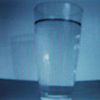
"Nothing Happens - a performance in three acts"
Turbulence Commission: Nothing Happens by Nurit Bar-Shai, Zachary Lieberman and Rich Miller :: Nothing Happens is a networked online performance in which the viewers work together to make a series of objects tip over. The performance consists of three acts, which are centered on staged environments – a high shelf, a cluttered tabletop, and a deserted corner. Each scene contains a central protagonist, respectively: a cardboard box, a clear pint glass full of water, and a wooden chair. In all three acts, web-enabled physical devices controlled by the viewer’s clicks will make these objects tip over.
The three acts will be presented on October 15th, 22nd and 29th at 3rd Ward gallery Brooklyn. Please join the artists for an opening reception Sunday, October 15, 2006 6-8 p.m.
"Nothing Happens" is a 2005 commission of New Radio and Performing Arts, Inc., (aka Ether-Ore) for its Turbulence web site. It was made possible with funding from The Greenwall Foundation. Additional support from 3rd Ward Gallery.
BIOGRAPHIES
NURIT BAR-SHAI'S main interest lies in exploring tensions between the mundane and the uncanny in everyday life. Emanating from her creative roots in fine arts, Bar-Shai employs video and new technologies to explore fundamental questions of presentation and representation, to reframe the familiar and turn audiences into foreigners in their own ontological domains.
ZACHARY LIEBERMAN'S work uses technology in a playful and enigmatic way to explore the nature of communication and the delicate boundary between the visible and the invisible. He creates performances, installations, and on-line works that investigate gestural input, augmentation of the body, and kinetic response.
RICH MILLER is a sculptor and a recent graduate of the Interactive Telecommunications Program at NYU. His creative energies are focused on making electro-mechanical pieces that humor him, as well as designing and fabricating innovative and dynamic children’s museum interactives and furniture. He lives and works in Astoria, NY.
Posted by jo at 02:15 PM | Comments (0)
September 26, 2006
Blind Camera

The camera that takes others' photos
Well, well, i have to thank Julian for the scoop! Sascha Pohflepp is a new media artist based in Berlin. He also writes on this blog and rumours had it that his graduation project at the University of the Art in Berlin was kind of awesome.
His Blind Camera captures a moment at the press of a button. However, the device doesn't have any optical part. The camera memorizes only the time of the picture and immediately searches the net for other photos that have been taken in the same moment. Essentially, it is a camera that only takes photos that were created by someone who pressed a button somewhere else at that very time as its own button was pressed.
After a few minutes or hours, depending on how soon someone else shares their photo on the web, an image will appear on the screen. In a way, it belongs half to the person who had pressed the button and still remembers that moment. Because of that connection, the photos are never dismissed as random, no matter how enigmatic they may be. Video.
Brilliant stuff, Sascha! I'm sure i'll still want to take my own pictures but i'd love to have another one that allows me to do on the spot what i can't help doing when i upload my images on flickr: snooping around to check the photgraphies of other users who attended the same event as me or know the same person or happen to be in town that day. Also by Sascha: Fixr and Eavesdripping. [blogged by Regine on we-make-money-not-art]
Posted by jo at 05:18 PM | Comments (0)
September 21, 2006
Annie Abrahams & Clément Charmet
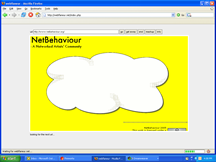
Webflâneur 4.0
Webflâneur 4.0 by Annie Abrahams & Clément Charmet :: A kind of compressed browsing, like sometimes those dreams, that condense the weight of a whole day in a single action, in which everything gets mixed. This feeling of "watching the cache" of our browser (the hidden?). A discovery tool that brings us back to the earlier ages of the web, when "flaner" was still possible.
Trotting the web guided by a travel software, going from one page to another without doing anything at all, immersing the data flow while observing its interior structure. Going in all directions, losing oneself, finding unexpected relations and gigantic domains that stick, places from where you can hardly escape. To stop and consult the list of the pages you visited, to have its plan, to be able to choose again. Having a possibility to generate at any moment a unique Mashup controlled by a random script. Images, texts, videos and sounds collected during your visit form an orgiastic collage.
If your stroll is very slow, please try another URL or come back at another moment of the day or find a faster connection.
Posted by jo at 04:34 PM | Comments (0)
September 18, 2006
Monument (If it Bleeds It Leads)
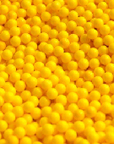
XML Graveyard
A recent project by Seattle artist Caleb Larsen harnesses RSS feeds to document the news media's cynical exploitation of readers' lust for tragedy. Titled after a newsroom cliche, Monument (If it Bleeds It Leads) scans a Google News feed for the word 'killed' and accompanying statistics about the number of dead. The figure is sent to a toy that shoots brightly colored plastic pellets from the ceiling of a gallery space, dispensing a pellet for every death reported. Sometimes the pellets come one at a time, sometimes 1,500 are fired. As one waits for the next wave to fall, the anticipation associated with viewing kinetic sculpture becomes a metaphor for a fascination with bloody news stories. In the sculpture, actual tragedy is eclipsed by a desire for an aesthetic experience in the same way that tragedy vanishes behind the spectacle of a gristly headline. But far from simply moralizing about media cynicism and public bloodlust, as the pellets pile up, the project becomes a sobering memorial. Once it hits home that each yellow sphere represents an actual life lost, the project creates an occasion to reflect on deaths that had once become sensational abstractions streaming over the Web. - Bill Hanley, Rhizome News.
Posted by jo at 10:32 AM | Comments (0)
September 08, 2006
DANCEPOD 2006

A Sculpture Composed of Simultaneous, Web-Connected Dance Parties
DANCEPOD 2006: On September 9th at 11pm in Portland, 12 am in Guadalajara, 2am in New York City, 3am in Mexico City and 7am in Berlin, dancepod will present an entirely new kind of sculpture. A sculpture composed of simultaneous, web-connected dance parties. The parties, coordinated and developed in conjunction with artists and presenters from each city, will utilize identical dancepod installations. The installations will become the core of a shared physical and virtual experience, supporting streaming video and music as well as live DJ’s, VJ’s, and surprising guest artists. Moving bodies of dancing participants will complete the sculpture.
As part of the Portland Institute of Contemporary Art's (PICA) Time-Based Art (TBA) Festival, in conjunction with PS122, Scene Downtown (Earl Dax), Harkness A/V (Nick Hallett), and technical directors Kraft + Purver, these 4 DANCEPOD sites will be linked by live video starting at 2:00 AM Eastern Standard Time.
NYC DANCEPOD features an eclectic array of New York artists. Join DJs Kevin Graves (Brite Bar) and Van Scott (Patricia Field's Party at element) and dance to visuals artists assembled by Nick Hallett and Harkness A/V, including Chika and Boris. Live performances by John Moran and Saori Tsukada, Sxip Shirey, and Glenn Marla.
Chez Bushwick will be hosting "The Changing of the Garde" starting at 8:00 PM on Saturday. Come early for DANCEPOD and enjoy performances by:
Wanjiru Kamuyu – Spiral
Jim Staley – Solo Trombone
Bruce Nauman - “Abstracting A Shoe (1966)” – Video Art
David Vaughan, Michael Cole, Jonah Bokaer – A John Cage Birthday Reading
Elke Rindfleisch - Untitled
Also... TECHNOPIA Interviews Carla Peterson, Newly-Appointed Artistic Director of DTW.
All this for $5. Come to both the Chez Bushwick and DANCEPOD events for just $10! That's like seeing the early show for FREE! (Regular DANCEPOD admission is $10).
Hosted By
3rd Ward Brooklyn
195 Morgan Ave.
Bushwick, Brooklyn, NY 11206
718.715.4961
www.3rdwardbrooklyn.org
Posted by jo at 05:46 PM | Comments (0)
August 30, 2006
NETWORKED_PERFORMANCE
![]()
Joburg-Derby-London & You
The Premises Gallery at The Johannesburg Civic Theatre invites you to join us for a Red Bull and some live online performance: NETWORKED_PERFORMANCE VisitorsStudio performance Joburg-Derby-London live at The Premises and online at http://www.visitorsstudio.org.
A live-online collaborative performance by Nathaniel Stern, Marc Garrett and Ruth Catlow. And open laptop mixing by audiences and invited local artists at the Premises Gallery (Johannesburg), HTTP (London) and Q Arts (Derby).
EVENT: Saturday 2nd September, 16:30 – 19:00 (SA time)
Getting started and uploading at The Premises: 16h00 (SA time)
Live scheduled performance: 17h00- 17h30 (SA time) and 16h00 - 16h30 (UK time) by Nathaniel Stern, Marc Garrett and Ruth Catlow
Open collaborative mix: 17h30 (SA time) and 16h30 (UK time) Everyone welcome to join!
![]()
About VisitorsStudio: an online place for real-time, multi-user mixing, collaborative creation, many to many dialogue and networked performance and play. VisitorsStudio is a Furtherfield project @ http://www.visitorsstudio.org. VisitorsStudio is included in the Game/Play networked touring exhibition. A collaboration between Q-Arts, Derby and HTTP, London. Please see www.game-play.org.uk for further information.
How to PARTICIPATE
First, get the latest flash player on your computer. South Africans wishing to participate can bring their laptops (with ethernet cables) or content to The Premises a bit early, and upload content on our open network via their own machine or one of ours. Or, upload anywhere, anytime - you can even mix with us from Cape Town. If you want to be part of the VS performance by nathaniel, be sure to name your files beginning with SA_, and then an idea of what it is he would be including in the mix. If you want to play on your own, supply names for your files that you will remember. File types supported are jpg, png, mp3, flv and swf files, as long as they are under 200k.
More info, and to play: http://www.visitorsstudio.org
SPONSORED BY:
http://furtherfield.org
Art & Technology, Johannesburg, Co-directed by nathaniel stern and Prof Christo Doherty
Red Bull South Africa
the trinity session
The Premises at the Johannesburg Civic Theatre
The Premises at the Johannesburg Civic Theatre
Loveday Street, Braamfontein, Johannesburg, South Africa
+27 (0) 11 877 6859
thepremises[at]onair.co.za
Gallery Hours -
Tuesday - Saturday
10h00 - 17h00
office[at]onair.co.za
Directors -
Stephen Hobbs
+27 (0) 11 403 8358
sh[at]onair.co.za
Marcus Neustetter
+27 (0) 11 339 2785
mn[at]onair.co.za
Posted by jo at 01:25 PM | Comments (0)
August 28, 2006
SHIRLEY BASSEY GETS MIXED UP
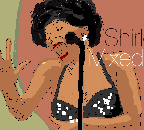
A Collaborative Biography
Shirley Bassey Mixed Up is a collaborative biography: an illustrated biography of the legendary diva, where the reader helps to 'mix' the illustrations online, using Internet searches. The biography was inspired by an incident on a TV awards show last year, where Bassey was publically humiliated. I felt sad to see this happen, and wanted to know more about what led up to this. All illustrations are built on-the-fly from live Yahoo searches. By specifying different searches and playing with the customisation options, the reader creates the illustrations themselves. This is a traditional (linear) 14-page story built on top of a generative composition tool, that uses Internet search data as its input.
The work can be described as a networked narrative, as a story partly created by networked data. Adding unexpected and uncontrolled elements to the story influences and changes the presentation, how it's experienced and what we take away from it. This shapes the story, changing fact into fiction, sometimes disrupting the story. As the networked elements are dynamic and largely unpredictable, every version of the biography is unique. Your version of the story is packaged into booklet form, for you to print and keep.
About Dave Miller: Dave Miller experiments with illustrated stories and networked media. More of his work can be seen here. [Related]
Posted by jo at 09:16 AM | Comments (0)
August 11, 2006
ISEA re:mote > live coding
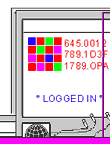
Intertwingularity
Hyperyarn, a conceptual artware, will be overcoded by criticalartware core.developers in 20 minutes during ISEA2006!
criticalartware core.developers based in Chicago IL .US are participating in ISEA2006 in San Jose CA .US via the re:mote program curated by Adam Hyde with an 'overcoded' [presentation/performance]. join criticalartware to collaboratively overcode the Open Source Hyperyarn artware application during this 20 minute artware development session [+/or] just view the source tree grow as script kittens get stuck climbing in these branching metastructures
Enjoy extreme programming style collaborative codeworking, discursive hyperactivity + deeply self-referential intertwingularity in this experimental Multi-Protocol Realtime Communication Client Server Application + Live Coding Environment!
Hyperyarn will be overcoded on FRI 2006.08.11 @ 3 PM PDT (Pacific
Daylight Time) if you are in San Jose CA .US [+/or] 5 PM (Central
Daylight Time) if you are in Chicago IL .US [+/or] 958 Internet Time
if you are onLine [+/or] 22:00:00 UTC (Coordinated Universal Time) [+/
or] GMT (Greenwich Mean Time) everywarez...
Posted by michelle at 05:30 AM | Comments (0)
July 31, 2006
Locus Sonus Audio Streaming Project
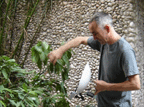
OPEN CALL
August 2006 :: This is a call from the French based Audio in art research group Locus Sonus to participate in their streamed soundscapes open web-mike project. Open an ogg audio stream from your home or garden (no pre-recorded playlists please) and become a remote member of the Locus Sonus orchestra.
Locus Sonus is a research group specialized in audio art (École Supérieure d'Art d'Aix-en-Provence, École Nationale Supérieure d'Art de Nice Villa Arson). Its objective is to experiment and evaluate the innovative and transdisciplinary nature of audio art forms in a lab-type context. It is also concerned with in the communal, collective or multi-user aspects inherent in many emerging audio practices and which necessitate working as a group. Two main thematics define this research - audio in it's relation to space and networked audio systems.
To participate in this project, contact support[at]locusonus.org :: to listen to the streams already available click here :: to download a PD patch and start streaming click here :: to see video documentation of our previous presentations and to find out more about Locus Sonus in general, click here.
NEXT PUBLIC EVENTS
Presentations start from 15th to 30th of August in various performance and installation situations, starting with DIGIT Delaware Delaware Valley Arts Alliance & Roebling Bridge Environmental Arts and LMCC (Lower Manhattan Cultural Council) in partnership with THE THING Inc. (New York) with the support of Étant Donnés, The French-American Fund for Contemporary Art.
Presentations continue in the fall with an installation during the Arborescence festival in Aix-en-Provence, France, and an installation performance at GMEM, Marseille France.
Festival DIGIT: http://www.artsalliancesite.org/programs/digit_06.html
LMCC: http://www.lmcc.net/
THE THING: http://bbs.thing.net/
Arborescence: http://www.arborescence.org/rubrique.php3?id_rubrique=3
GMEM: http://www.gmem.org/
TECHNICAL DOC
To Start Streaming You will Need :
* a PC or Mac dedicated to the stream (an old 450 MHz machine should do).
* a sound card recognized by your operating system.
* a microphone ($3 radioshack mike is fine).
* streaming software (we propose that you download our PD patch and run it using PureData that way you can customize your stream (for OSX, Windows and Linux). We recommend that you use this Hans Christoph Steiner's extended version which includes the necessary ogg vorbis libraries.
* a high speed internet connection and a network router.
We obtained the good results using the Dyne:bolic Linux distribution. The advantage being thats it's a liveCD (so you don't have to install the system) and that PD and all the necessary externals are already installed. You might run into difficulties if the system doesn't recognize the PCs built in sound card in which case the easiest option is to find an old soundblaster card and disactivate the built-in card in the bios.
It's important for us to get a wide range of soundscapes and social situations, remember that urban sound is pretty similar around the western world so you might want to chose to place your microphone so as to capture interesting or unique aspects of your environment and also to listen to the other current streams to caracterize yours.
We are also finding that in most circumstances it is preferable to customize the patch, sometimes a little filtering is all thats needed (as for example: port.ogg) but we've also built a sampling patch which records and plays back recent sound events continually updating its database (as for example: cap15.ogg).
Listen to the current streams.
Posted by jo at 10:56 AM | Comments (0)
July 28, 2006
Alex Dragulescu

The Architecture of Spam
Alex Dragulescu has some extremely interesting projects up on his website right now. For the most part, they're "experiments and explorations of algorithms, computational models, simulations and information visualizations that involve data derived from databases, spam emails, blogs and video game assets." However, this one – called Spam Architecture – totally blows me away: "The images from the Spam Architecture series are generated by a computer program that accepts as input, junk email. Various patterns, keywords and rhythms found in the text are translated into three-dimensional modeling gestures."
Applying this to large-scale architectural design would be endlessly and hypnotically fascinating – not to mention quite profitable if you turned it into a kind of immersive, 3-dimensional version of Tetris. You turn digital photographs of your last birthday party into architectural structures; your Ph.D. thesis, exported as an inhabitable object; every bank statement you've ever received, transformed into a small Cubist city. Your whole DVD collection, informationally re-presented as a series of large angular buildings.
Of course, you could also reverse the process, and input CAD diagrams of a Frank Gehry building – thus generating an inbox-clogging river of spam email. The Great Wall of China, emailed around the world in an afternoon. The collected works of Frank Lloyd Wright. In any case, Dragulescu currently works at the Experimental Game Lab at UC-San Diego – the same institution at which Sheldon Brown developed his Scalable City project.
(Thanks to Brent Kissel for the tip about Dragulescu – and you can read more here – and to Brian Romer for Scalable City). [blogge by Geoff Manaugh on BLDGBLOG]
Posted by jo at 06:36 PM | Comments (0)
July 26, 2006
Game/Play presents

Abiogenesis
The Game/Play team are pleased to present: An online performance by Tale of Tales - Auriea Harvey and Michael Samyn, in The Endless Forest :: Thursday July 27th 7.00pm – 8.00 pm (BST) :: Free, all are welcome :: To play: Download the Endless Forest 'social screensaver'.
Come and meet us online within the live, real-time world of 'The Endless Forest'. "The Endless Forest by Tale of Tales is a game about beauty, wonder, calm and peace. There are no stealth missions, no guns to swap, no armour or enemies. Taking on the role of a somewhat dreamy deer who wanders through an endless forest imbued with magical powers that seem as unpredictable as mesmerising, players of The Endless Forest are invited to hang out and roam amidst beautiful trees, old mysterious ruins, an idyllic pond and happy flower beds. Without a goal of any sorts, they soon find that there’s more to the forest than just mere eye candy." Maaike Lauwaert & Martijn Hendriks. Read full text.
"In keeping with Wirefire, an earlier project involving a series of intimate live, online performances on the theme of love, the artists intermittently appear as the ‘gods’ of the Endless Forest. Using a system they call Abiogenesis the virtual woodlands become a mutable stage for the artists’ performances." Ruth Catlow & Marc Garrett. Read full text.
The touring Game/Play exhibition is currently showing at Q Arts, Derby and HTTP, London.
Posted by jo at 01:53 PM | Comments (0)
July 25, 2006
Motion Still Life 01
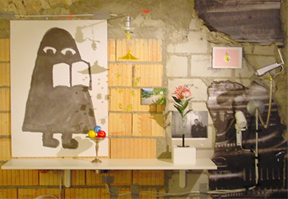
Make your still life, leave your mark...
Will Pappenheimer's Motion Still Life 01 continues at Cabaret Voltaire, Zurich, 'til August 1.
Posted by jo at 02:37 PM | Comments (0)
Stratoself

Short-Circuit Between Physical + Virtual Worlds
Stratoself is an interactive sky-art work that was conceived on a short-circuit between physical and virtual worlds. It has been designed by that hybridism: there’s a missing link between internet and helium gas we wanted look for. For such opposite environments we needed a flexible, self-generated, autonomous bridge. Cybercommunities were the best choice.
The idea is to release helium-filled balloons carrying participants' personal email cards inside, in the air. The participant's balloon can be ordered at the project's site and NAUTC.0, (we're group of electronic artists from São Paulo, Brazil) is in charge of assembling the entered data with the biodegradable latex balloons, and releasing them in the air of big cities of Latin America. Anyone who gets or finds a balloon can communicate with the participant via email.
The project aims to find non-conventional means of netting cybercommunities's individuals from all over the world, by temporarily colonizing urban common spaces with private material. To launch that personal electronic piece of data in physical public sites, is a way to discuss how social identity and digital territory is built in the creative boundaries of cybercommunities.
People who want to order their personal balloon and participate in Stratoself's first performance in August 14th, can register at:
http://www.stratoself.com/english.htm
Posted by jo at 09:06 AM | Comments (0)
July 20, 2006
15x15
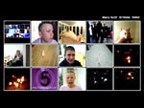
Homage to Warhol
In 1968 Andy Warhol stated that; In the future, everyone will be world-famous for 15 minutes. Using Warhol’s statement as a premise, 15x15 advances the statement into the 21st century; with new media technology anyone and everyone can be world famous. For 15 seconds...
Participants can contribute to the piece using a standard mobile camera phone that can capture video, and can send video clips directly from their camera phone using MMS (Multimedia Message Service), via email or upload from your personal computer to the online database www.15x15.org or email me[at]15x15.org
The clips should be the standard video setting for a cameraphone, 176 x 144 and can be longer than 15 seconds but will be reduced to that length, participants can send as many clips as they wish. The clips can be portraits, experiential, vignettes, experimental, anything within reason, from the banal to the downright bizarre!
The viewable artwork is an interface consisting of 15 individual rectangular screens, each individual screen displays a random video clip stored within the database for a 15 second duration: 15x15. In the 21st century art is being fundamentally realigned for anyone and everyone. 15x15 is a homage to Warhol, a realisation of the artistic utilisation of new media technology and the democratisation of art in the age of digital production.
Technical requirements: Requires fast internet connection and fast computer (processor) and Flash 8 plugin. The piece can be viewed on a monitor but is best viewed as a projected piece.
Richard Vickers, Oliver Dore, Greg Brant, Hull School of Art & Design, University of Lincoln, United Kingdom.
Posted by jo at 08:31 AM | Comments (0)
July 19, 2006
Intimacy and In.yer.face
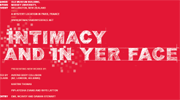
Blurring Online and Physical Performative Space
Intimacy and In.yer.face (July 20th, 8 p.m. (NZ time)) is a live performance / installation event and remix project, featuring an interdisciplinary selection of local and international artists, operating in the nexus between art and technology. Our conception of site is fragmented when agents participate from spatially dispersed locations, and when the boundaries between online and physical performative space are blurred. Intimacy and In.yer.face explores this fragmentation, the endless and cyclical encoding and decoding of information that occurs in the interface between humans and machines.
Curated by Daniel Agnihotri-Clark, Intimacy and In.yer.face commences with a one-night event featuring simultaneous live performances and interactive installations, linked by real-time streaming of audio and video signals which will be broadcast over the internet. The event will feature new works by the globally dispersed cyberformance troupe Avatar Body Collision (New Zealand, London, Helsinki), the interdisciplinary artist Kartini Thomas (Wellington), aerialists / actors Pipi-Ayesha Evans and Rhys Latton (Wellington), and audio / video artists Emil McAvoy and Damian Stewart (Wellington).
The performance/installation event will take place on July 20th in the former Dominion Museum Building, Wellington (8 p.m. NZ time), at a mystery location in Paris (10 a.m. FR time), and everywhere else via http://www.intimacyandinyerface.net. Intimacy and In.yer.face is truly a simultaneously local and global event, pushing the understandings of site and indeterminate modes of performance practice in the interface with technology. Intimacy and In.Yer.Face follows last year's Indeterminacy and Interface - the first of performance event curated by Daniel. These projects form a significant component of his on-going doctoral research at the Massey University School of Fine Arts.
Following the performance / installation event, an open call for remix will expand the role of the audience, facilitating active participation and dialogue. Audio and video files will be available for download from the website. This remixed material will then be collated into a limited edition DVD release.
For full information about the project and the artists involved please see
http://www.intimacyandinyerface.net
Intimacy and In.yer.face
July 20th, 8 p.m. (NZ time)
Old Museum Building, Buckle St, Wellington, New Zealand
and Mystery Location, Paris
and http://www.intimacyandinyerface.net
Online Soiree
http://www.intimacyandinyerface.net
10 a.m. - 12 noon NZ time/ 10 p.m. - 12 a.m. FR time
Artist/Curator talk
School of Fine Arts seminar room, Block 2, Level C, via Gate C, Wallace St.
12.15 p.m.
For further information, images or to arrange an interview with the participants please contact: Louise Menzies, on tel: 04 801 2794 x6197, email: L.C.Menzies[at]massey.ac.nz. or Aaron Kreilser on tel: 04 8012794 x6341, email: A.P.Kreisler[at]massey.ac.nz.
Posted by jo at 02:33 PM | Comments (0)
July 12, 2006
Live at Cabaret Voltaire Tonight!
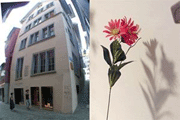
Motion Still Life 01
Motion Still Life 01 -- by Will Pappenheimer -- goes live online at Cabaret Voltaire, Zurich, July 12 ::
log in, tune out :: inhabit many still lives :: be patient or disorganized :: network is slow but dada is quick ::
July 12 - July 15 :: Digital Art Weeks :: ETH Computer Systems Institute :: Cabaret Voltaire ::
UTC/GMT+2, worldclock ::
NYC: 06:00am (EDT) Zurich: 12:00pm (CEST)
NYC: 11:00am (EDT) Zurich: 05:00pm (CEST)
Posted by jo at 06:19 AM | Comments (0)
July 06, 2006
Talking About the Weather
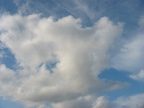
Contribute to Out-of-Sync's Breath Collection
"The air you just exhaled has already spread far and wide. The CO2 from a breath last week may now be feeding a plant on a distant continent, or plankton in a frozen sea. In a matter of months all of the CO2 you just exhaled will have dispersed around the planet." Tim Flannery, The Weather Makers
Talking About the Weather is an ongoing cross media project exploring our own response to the terrifying spectre of global climate change. Sheer terror at the possibilities that are being talked about led us to 'talking about the weather'. The weather, once a safe way for strangers to connect, is now fraught with an edge of danger as ominous signs of global warming multiply. In this project weathertalk is no longer a banal exchange of local weather forecasts, but instead we ask people to donate their breath - the breath which they would normally use to talk about the weather and the same breath that is spread far and wide as described by Tim Flannery.
Working with breath emphasises the dynamic nature of the atmosphere and our part in its creation and destruction. As Tim Flannery says, every breath you take makes you part of a dynamic system called the atmosphere, or the aerial ocean.
Talking about the Weather involves performative encounters, where we perform two Australian visitors to a foreign place asking for donations to our breath collection (to be the largest in the world) with which we will blow back global warming. These performative encounters continue our work with the ’pataphysical mode of an imaginary solution for an actual problem… in this case – global warming.
We have been ‘documenting’ the encounters on video and there is a link to excerpts on the blog.
During our (July 3-17) new media residency in New Zealand (SCANZ), we will be collecting more breath on the streets of New Plymouth. We will be exhibiting the breath collections, including your contributions, at Govett-Brewster Gallery in New Zealand in mid July, so please contribute soon. email us (maria[at]out-of-sync.com) for the login details.
Out-of-Sync is a collaboration between Australian media artists Maria Miranda and Norie Neumark.
Posted by jo at 01:00 PM | Comments (0)
July 03, 2006
Music 4100 Computers

Call for 100 Online Performers
Sean Kerr's first performance of M4100 is going to happen on July 9th, 12:00, NZ time at the Govett Brewster Gallery, New Plymouth, New Zealand. M4100 requires 100 online performers to create the event. Using a Flash multi-user server, all 100 online performers work together to creat an sonic and visual event that is live mixed by Sean Kerr, at the Govett Brewster Gallery auditorium.
If you are interested in participating in this event, please email your details to Sean Kerr [s.kerr at auckland.ac.nz] M4100 is coinciding with the exhibition 'what color does sound make?' and the sound performance event sound/bodies @ the Govett Brewster Gallery. M4100 is a 2005-2006 Rhizome.org commission.
Posted by jo at 05:21 PM | Comments (0)
Digital Art Weeks 2006
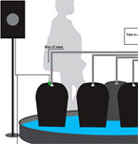
Symposium + Installations
Digital Art Weeks :: Symposium :: Artworks including:
The Waterbell Project--by Etsuko Maesaki--is a sound installation based on the Japanese 'Suikinkutsu'. Suikinkutsu ("Water Harp") is a unique feature of Japanese gardens. It consists of a large earthen jar with a hole in the bottom. This jar is buried upside down into the ground next to a water basin. When the waterdrops seep from above into the jar, they make a sound somewhat similar to what you would hear in an underground cave. The Waterbell Project consists of five vessels standing in a basin. A tube directs drops of water to the top of each of these vessels. When they drip into the water inside the vessels a sound can be heard. The frequency of the drops and the amount of water in the basin is controlled by a computer. At the same time this computer gathers realtime data from the internet: The price of oil in Japan and the temperature of the ocean. The frequency of the waterdrops dripping into the vessels corresponds with the temperature of the ocean, the water in the basin raises and drops with the price of oil, hence changing the quality of the sound made by the drops.
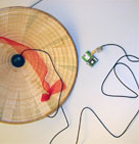
CHINA GATES by Art Clay, Dennis Majoe, & The China Gates Workshop-Ensemble: The early experiments of Charles Ives's father with marching bands crossing at intersections and his son's adoption of it, proves that interest in exploring mobility has fascinated even before electronic devices. As with Ive's marching band polytonality, we also have the opportunity using modern technologies from the Walkman to the Wearable not only interact with local surroundings like Ives, but for the first time also on a world wide level. Global networking systems such as GPS amoungst others have created a ubiquitous environments in which we can now make art in. China Gates is a work for GPS Wrist conductors and tuned gongs for an ensemble. The work addresses the concept of audience in public space through the possibilities of the GPS Wrist Conductor and an acoustic concept of music making in public space. Anyone interested in joining the workshop is welcome. It is open free of charge to those interested. The performance will be held regardless of whether conditions at Platzspitz and will be performed by a group of artists and musicians who took part in the DAW06 Mobile Music Workshop.
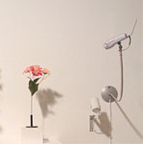
Motion Still Life 1--by Will Pappenheimer--extends the artistic tradition of the picturesque and spatial object arrangement into the domain of the Internet. A live Web camera frames a physical still life scene with vase, flowers and still life objects. Through its counterpart website, aesthetic controls allow internet viewers from anywhere to adjust the composition telematically in the distant space of the gallery. The Internet user is the surrogate artist. The time and space of the scene is ever-changing and accessible for the moment that becomes the still life. Exhibition visitors are able to see virtual participants configuring the still life through object movement, blinking LEDs connected with online activity, and multi-colored lighting for night time or alternative illumination. The mechanism is constructed from a self-contained network pan and tilt surveillance camera which has been disassembled and reconfigured for a more friendly gesture.
Posted by jo at 04:53 PM | Comments (0)
June 15, 2006
Month Of Sundays Live A/V Internet Mixing - 25th June
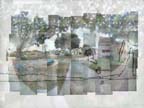
Two Sites, Two Cities
FurtherNoise.org Presents: Month Of Sundays Live A/V Internet Mixing. Featuring John Kannenberg & Glenn Bach. Open Mix led by Ruth Catlow & Marc Garrett (Furtherfield & HTTP). Post performance soundscapes by Alex Young (Furthernoise). Date & Time: 16.00 - 18.00 hrs BST; Where: E:vent - 96 Teesdale Street, London E2 6PU.
As part of the Month Of Sundays series of live A/V internet performances Furthernoise.org is hosting this unique event featuring a cross continent A/V performance by Chicago based John Kannenberg mixing in real time with Glenn Bach who will be performing from his home in Long Beach, California. The performance is based on their Two Cities project, which began in 2003 using sounds, photos, objects and data collected on Glenn and John's daily walking commutes to compare and contrast the environments of their respective hometowns.
It will take place in the online file mixing platform Visitors Studio
and projected, amplified into the gallery space from www.visitorsstudio.org
Come and join us at E:vent: Bring your laptops and media files and collaborate. Following the performance, Furtherfield artists Ruth Catlow & Marc Garrett will lead an open mix where audiences both online and in the gallery can join in by uploading and mixing their own audio & visual files in an open collaborative mix. Files can be mp3, swf, flv and jpg and must be a maximum of 2OOK.
There will also be free refreshments and post performance Soundcapes by Alex Young who's album 'Helicoids' is the new net release on Furthernoise.org.
As well as being shown at E:vent, the afternoons performances will be also broadcast, in real-time, online:- at The Watershed Media Centre, Bristol. The Point CDC Theatre, New York.
Curated by Roger Mills. Furthernoise & Visitors Studio are Furtherfield.org projects, supported by Arts Council England.
BIOGRAPHIES
Chicago-based sonic and visual artist John Kannenberg works with a variety of themes including primal natural forces, spirituality and mindful contemplation, melancholy and nostalgia, abstracted narrative tales, and the confluence of sonic and visual art. His major appearances include the Spark Festival 2006 (Minneapolis), so.cal.sonic 2005 (Long Beach), ISEA 2004 (Tallinn), and the Placard Festival 2003 (New York). John is the creator and curator of Stasisfield.com, an experimental music label and digital art space presenting works by a diverse collection of artists from around the globe.
Based in Long Beach, California, Glenn Bach is an active multidisiciplinary artist influenced by the act of mindful walking and environmental sound, Bach has performed at Field Effects (San Francisco), the Big Sur Experimental Music Festival, and the Schick Art Gallery (Saratoga Springs, NY) and has curated a house concert series, Quiet (2003), the week-long so.cal.sonic festival (2005) and is the founder of the research group Pedestrian Culture. His current project is a poem sequence, Atlas Peripatetic, inspired by an extensive mapping of sounds on his morning walk.
Ruth Catlow is an artist and works as co director of Furtherfield, formed and run in partnership with artist, Marc Garrett since 1997. Ruth works with networked media in public physical spaces and on the Internet. exploring net art with new communities (of artists and audiences) with less reliance on existing, traditional art world hierarchies, developing independent grass-roots expression and representation. She is exploring the potential of current network technology for promoting distributed creativity which raises a whole series of issues by giving rise to a more permeable boundary between established arbiters of culture, artists and audiences radically changing the life of the artwork in the world, and the ways in which people come across it.
Marc Garrett is an Internet artist, writer, street artist, activist, curator, educationalist and musician. In a constant state of being renascent. He share's no allegiance to any one form of art or expression. 'For me, art, or rather creativity, is an intuitive strategy that involves learning, questioning, progressive thought and putting playful explorations into action'. Emerging in the late 80's from the streets exploring creativity via agit-art tactics, Marc declares his own and humanity's seemingly perpetual dysfunction. Consciously using unofficial platforms such as the streets, pirate radio, net broadcasts, BBS systems, performance, intervention, events, pamphlets, warehouses and gallery spaces. In the early nineties he was co-sysop with Heath Bunting for Cybercafe BBS.
Posted by jo at 02:26 PM | Comments (0)
June 05, 2006
OneSmallStep: a MySpace LuvStory
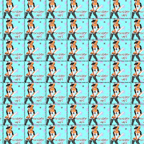
Cut/Paste Identities
We are not ourselves. We cut and paste as we are cut and pasted. We are the remix of images and sounds that never existed outside of this mediated dream. And we are happy to exist this way.
OneSmallStep: a MySpace LuvStory is an unfolding automated jam - a conscious sampling and randomized regurgitation of MySpace.com media archeology wherein desire, fantasy and fetish form a composted feast for the withered and lonely senses in an eternally habitual loop of voyeuristic consumption, spectacular regurgitation, virtual intimacy and identity production/consumption.
With each launch, OneSmallStep runs continuously while randomly remixing content form a database that is periodically updated. OneSmallStep is a conceptually interactive work, and also, a non-clickable work.
OneSmallStep: a Myspace LuvStory is a project developed for Concept Trucking, an exhibiton venue maintained by LeisureArts that uses MySpace as its platform. It hosts work that critiques, mimics, or otherwise utilizes the structural logic of social networking sites and other Web 2.0 phenomena.
Posted by jo at 09:26 AM | Comments (0)
May 24, 2006
Open Source House
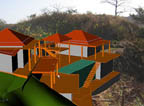
Using Flickr for Participatory Architecture
Rahm Rechtschaffen, an architecture student at Catholic University in Washington DC, is using Flickr to run a participatory architecture project for his senior thesis. We've talked about applications of open source in architecture and design before, and the potential that OS could open for transformation in those fields.
"Unlike the software programmers that participate in open source design projects, the end users of most architectural projects are neither steeped in the guiding principles of architectural design, nor are they able to the use the tools required to create a design," says Rechtschaffen in his introduction to the project, "Although architects often go back and forth between design and client, the architect always keeps the client management and the design process separate. In an open source project the client would be directly involved in the design process."
The idea here is not to eliminate the architect, but to permit all future users of the space full access and participation to any part of the planning and design process, at any time. By putting the project on Flickr, users can track the progress of various contributions and changes as they make their own. Because it's a public project on Flickr, even unsolicited contributors can jump in if they so desire.
Rechtschaffen ran a survey a few months ago to determine how the project was progressing. Based upon the feedback, he developed several new iterations and invited the next round of contributions. He has tracked the entire process in both visual and textual detail on Flickr. It's interesting to scroll through and read the commentary at various stages in the process, which has now been underway for about 4 months.
Where will this fully-participatory ideal dwelling be? A hillside in Costa Rica, an obvious place for utopian dreams to come alive. via: Tropolism [blogged by Sarah Rich on World Changing]
Posted by jo at 05:34 PM | Comments (0)
May 01, 2006
Turbulence Commission:

The Saddest Thing I Own
The Saddest Thing I Own by Matthew Belanger, A. Elizabeth Mikesell, and Marianne R. Petit: There are some things that we own that are just so sad. You know what we mean. Sad. It seems likely that these sad things illuminate our vulnerable places, one way or another.
"The Saddest Thing I Own" invites people everywhere to share the saddest thing they own. What are these sad things? What makes things sad? Do things start off sad? Do some sad things begin as happy things that then become sad? Are some things only sad because for some sad reason we kept them? Are some things just plain sad no matter what? This is what we want to know.
"The Saddest Thing I Own" is a 2006 commission of New Radio and Performing Arts, Inc. (aka Ether-Ore) for its Turbulence web site. It was made possible with funding from the Jerome Foundation.
BIOGRAPHIES
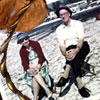
MATTHEW BELANGER is a New York based new media artist, programmer, and consultant. He dedicates this site to his mother, Wendy, who passed away in October of 2005 after a long battle with cancer. His works include documentary video, large-scale digital photography, interactive online applications and software development. His complete portfolio can be seen at: http://www.matthewbelanger.com/
A. ELIZABETH MIKESELL is an artist and writer who lives in New York City. She is on the faculty of New York University's Expository Writing Program, in which she teaches writing to students in the Tisch School of the Arts. Her fiction and non-fiction have been published in a number of small literary magazines.
MARIANNE R. PETIT is an Associate Arts Professor at the Interactive Telecommunications Program at the Tisch School of the Arts at New York University. Her artwork, including video, animation, and installation, has been exhibited in international festivals and exhibits and reviewed in a variety of publications including Leonardo, Wired and World Art. Her work can be seen at: http://www.mariannepetit.com.
Posted by jo at 11:59 AM | Comments (0)
April 27, 2006
SURVEY: NEW MEDIA

Among the Audience
"The era of mass media is giving way to one of personal and participatory media, says Andreas Kluth. That will profoundly change both the media industry and society as a whole.
As with the media revolution of 1448, the wider implications for society will become visible gradually over a period of decades. With participatory media, the boundaries between audiences and creators become blurred and often invisible. In the words of David Sifry, the founder of Technorati, a search engine for blogs, one-to-many “lectures” (ie, from media companies to their audiences) are transformed into “conversations” among “the people formerly known as the audience”. This changes the tone of public discussions. The mainstream media, says David Weinberger, a blogger, author and fellow at Harvard University's Berkman Centre, “don't get how subversive it is to take institutions and turn them into conversations”. That is because institutions are closed, assume a hierarchy and have trouble admitting fallibility, he says, whereas conversations are open-ended, assume equality and eagerly concede fallibility." From Among the audience, SURVEY: NEW MEDIA, The Economist print edition, Apr 20th 2006.
Posted by jo at 11:22 AM | Comments (0)
April 25, 2006
Blind Ditch
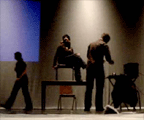
WHO WANTS TO BE A HERO NOW?
Blind Ditch invite you to state your opinions and ask some questions in our performance installation WHO WANTS TO BE A HERO NOW? showing as part of the Exeter Text Festival, UK, April 24th-14th May 2006.
Send us a mobile phone short or digital camera mpeg to +44 (0)7890 801203 or contact[at]blindditch.org and it will be downloaded onto our website. Your work will be continually screening online from April 24th and shown in the Exeter Phoenix Gallery as part of the tEXt Festival. Tell us what action should we make to change the world for the better. Please pass this on to anyone across the world you would like to participate, translate and disseminate. Respond in your mother tongue or English Please note that the word hero is being used to speak about both men and women.
Please be aware that by participating in this project you are agreeing for Blind Ditch to use your image and words in our work. Your statements will be curated with live performance work and available online and in the gallery throughout the duration of this project.
Posted by jo at 08:43 AM | Comments (0)
April 20, 2006
Love City
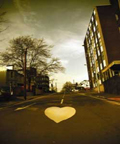
Locative Menage a Trois
Nottingham-based technology artists, Active Ingredient (authors of 'Ere Be Dragons), are to launch an interactive game that will link the people of Leicester, Nottingham and Derby. Love City will allow people to text each other in a game that awards points for making connections with people from the other cities.
The game uses mobile cell location to track users' positions in the three cities. When a player moves between mobile phone 'cells', s/he (Player 1) receives an SMS that includes an update about Love City and the status of other players in their area or in one of the cities. Players can then connect with each other by sending a text to another person in another place. If Player 2 accepts Player 1's message of love, a connection is made and these form a "bonded pair". If a second connection is made from this group to a third player, then a triplet or Ménage à trois is created.
When a triplet is formed, Player 1 is awarded an avatar known as the "offspring" which acts as an agent for them in this particular cell. Subsequent connections with this agent are relayed to the original player who may be far from the cell but can still connect and initiate a process which leads to the creation of more offspring and points for them. Thus their empire grows.
The first test of the game, commissioned by Three Cities, will take place on April 3 – 9 2006.
The full-scale public project is likely to take place at the end of the year when a big-screen projection of the game will be broadcast in the main public spaces of each city.
Via Media Arts Education. [blogged by Regine on Textually]
Posted by jo at 07:47 AM | Comments (0)
March 12, 2006
CHINA GATES: Mobile Music Performance

Work for Tuned Gongs and Wrist Conductor
The Digital Art Weeks 2006, organized by members of the Computer Science Department of the ETH Zurich, is looking for up to twelve persons who are interested in contemporary music and art who would be interested in participating on a voluntary basis for the performance of a new Mobil-Music work under the direction of Sound Artist, Art Clay using GPS and mobile computer technologies.
Aesthetically, the work China Gates for tuned gongs and Wrist Conductor is rooted in works for open public space and belongs to a series of works, which celebrate the use of innovative mobile technologies to explore public space and audience. The work is technically based on possibilities of synchronizing a group of performers using the clock pulse emitted by satellites. The GPS Wrist Conductor signals each player when to hit the gong. An intense rippling effect results as the players gradually move around the park and the music of the gongs shift back and fourth from intense chords to exotic melodies.
The preparation for the event will take place in the form of a mini-workshop on mobile music and sound in open space.
Persons interested in participating are asked to apply by sending a message to the below stated email address. Please include a short biography (50 words) telling us about yourself and why you would you like to participate. Selected players will receive a festival pass for all Digital Art Weeks 06 events. Send to arthur.clay[at]inf.ethz.ch
Posted by jo at 11:30 AM | Comments (0)
March 10, 2006
Feeling lucky? Downloading as a desired risk

Russian Roulette
According to Wikipedia, a russian roulette is "the practice of placing one round in a revolver, spinning the cylinder and closing it into the firearm without looking, aiming the revolver at one's own head in a suicidal fashion, and pulling the trigger. The number of rounds placed in the revolver can vary. As a gambling game, toy guns are often used to simulate the practice. The number of deaths caused by this practice is unknown".
Carlos Katastrofksy used this concept in one of his latest netart projects, but replacing the shooting activity by the more zeitgeist behaviour of downloading. And if randomly shooting could easily take your life away "in a suicidal way", the random downloading of files with no safety guarantees whatsoever could easily take your computer's "life" as easy as the original roulette did. There is no possible ingenuity, "be aware!" the artist says. One can be about to download bad or dangerous data, but who can resist the thrill of risking your own beloved state-of-the art laptop?
But dangerous downloading isn't just the only important aspect here. like in any p2p application, downloading implies uploading, for a file to be downloaded by someone it has had to be generously uploaded by someone else. The files stored in Russian Roulette are the files people decided to share. We don't get to know who uploaded what, just their names (in a reminescence of The Original), a way of further combining the most important concepts of this project: file transfer (up and downloading), desire and risk.
Katastrofsky plays with something very interesting: the file sharing that takes place isn't utilitary (the information per se value), social (the relational value) or political (the free acces to information value). File sharing in this situation has only to do with desire, risk taking, by surprising or being surprised, by engaging in potentially dangerous behaviour or enabling others to do so... one yearns to engage in such activities. Risk taking is part of our contemporary society, no more an external threat, but an actual definig element of contemporary, western societies, Ulrich Beck said in his La Société du risque - Sur la voie d'une autre modernité (the french translation), and this project is such a good way of ilustrating that: desire and risk connected to the file sharing activity of our digital times.
Oh the thrill of downloading and opening an unknown file just for the sake of doing it... adrenaline rushes through the whole body...
Carlos Katastrofsky
russian roulette
call for contribution
2006
Posted by luis at 06:36 AM | Comments (0)
March 03, 2006
VisitorsStudio
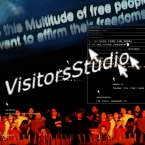
Version2
A project by Marc Garrett (director, creative), Neil Jenkins (director, creative & tech), Ruth Catlow (director, creative) and Furtherfield in collaboration with Arts Council England (London) (funder).
VisitorsStudio is an open, multi-user, online arena for creative 'many-to-many' dialogue and networked performance. Through simple and accessible facilities, the web-based interface allows users to collage and manipulate their own and others’ audio-visual files, and to imaginatively recontextualise existing media. VisitorsStudio provides a platform for explorations of collective creativity for both established artists and those excluded from traditional art structures, for reasons of geography or social circumstance.
In March 2006, Furtherfield will launch VisitorsStudio Version2, which incorporates new artistic tools and community building facilities, allowing users to schedule and promote their own performance programmes. These can be recorded, archived, downloaded and redistributed as screensavers. 25th-26th March "VisitorsStudio" @ Idea Store, Chrisp Street [a NODE.London event]
Participants upload content, image and sound files (JPG, MP3, SWF) to a shared database, responding to each other’s compositions in real time. Individuals can also chat with each other and are identified within the online space by their own dancing-cursors.
VisitorsStudio is a Furtherfield project collaboratively developed by artists, programmers, critics and curators, with significant contributions by audiences new to net art, and members of online art and technology forums. This platform continues to grow organically in response to their participation.
Posted by jo at 10:01 AM | Comments (0)
February 27, 2006
UpStage

Indigenous Maniacs
The next UpStage open walk-thru on Wednesday, 1 March, will include a short performance by participants of the recent UpStage workshop at the Computing Women's Congress in Hamilton, NZ.
The performance is called "Indigenous Maniacs" and was inspired by material presented at the congress, including Liz Bryce's MFA Master's project "Becoming Indigenous: an impossible necessity". Liz's work explores concepts inherited by Pakeha (white) New Zealanders through the desires of their colonial ancestors, and speculates on the paradox - to "become" indigenous. "Indigenous Maniacs" was created during 4 3-hour workshop sessions, and when it was presented at the conference we were all in the same room together - so it will be a new challenge to perform it with everyone in different locations, some on dial-up, and no physically present audience.
We'll meet in the Introduction Stage at the following times, then proceed to the Indigenous Maniacs stage: USA California: 12am; USA New York: 3am; UK: 8am; Western Europe: 9am; Finland: 10am; Australia NSW: 7pm; NZ: 9pm. For other local times, check http://www.worldtimeserver.com/.
Point your browser at http://upstage.org.nz:8081/stages/presentation; there's no need to log in for the performance (in fact we'd prefer it if you didn't), but if you'd like to log in and play afterwards, please email me for a log-in.
UpStage is a web-based venue for live performance; in this creative online environment, multiple players in remote locations work together to compile avatars, images, text, speech and web cams for real-time digital story-telling.
Helen Varley Jamieson: creative catalyst helen[at]creative-catalyst.com http://www.creative-catalyst.com; http://www.avatarbodycollision.org; http://www.writerfind.com/hjamieson.htm
Posted by jo at 12:12 PM | Comments (0)
February 15, 2006
HTTP Gallery
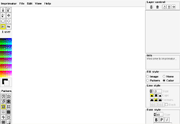
Invitation to Create and Exhibit Posters
You are invited to create posters through Andy Deck's Imprimatur http://turbulence.org/Works/imprimatur/. All posters created during February, March and April will be displayed at HTTP Gallery and the surrounding public spaces for the next exhibition, 'Open Vice Virtue: the online art context'. Also photographs of posters displayed in public locations will be documented on the HTTP website. So please download, print out and paste up archived posters in your own localities - send your photos to info[at]http.uk.net
"Imprimatur consists of an online 'groupware' for poster illustration and layout accessible through a computer workstation installed in the gallery space. Visitors can use the software to create their own poster in collaboration with their online counterparts. This piece provides a framework for visitors/ participants to launch a personal poster campaign based on their own social and political concerns. This DIY approach revives the tradition of poster-making as a medium of mass communication and persuasion developed during the 20th century. The posters will by displayed as part of the exhibition and will circulate freely beyond the gallery walls, appearing in surrounding streets, schools, libraries, kitchens and bedrooms."
Posted by jo at 08:03 AM | Comments (0)
UpStage
![]()
Indigenous Maniacs
This week I'm teaching an UpStage workshop at the Computing Women's Congress at Waikato and have a small but highly talented group of students who have progressed so rapidly that we're going to give a little performance on Thursday, February 16 at 12.45pm New Zealand time entitled "Indigenous Maniacs". Check here or here for your local time.
To join the performance, simply go to http://upstage.org.nz:8081/stages/indidgenous">.
Helen Varley Jamieson: creative catalyst helen[at]creative-catalyst.com http://www.creative-catalyst.com http://www.avatarbodycollision.org
http://www.writerfind.com/hjamieson.htm
Posted by jo at 07:40 AM | Comments (0)
November 29, 2005
Million Dollar Homepage
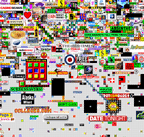
Anything Smaller Would Be Too Small
"...[E]veryone is welcome to buy my pixels, which are available in 100-pixel 'blocks' (each measuring 10x10 pixels). You will see the homepage is divided into 10,000 of these 100-pixel blocks (hence there are 1,000,000 pixels in total). The reason for selling them in 100-pixel blocks is because anything smaller would be too small to display anything meaningful.
You can buy as many pixels as you like, as long as there are some available on The Million Dollar Homepage (see the live stats in the top right corner of the page). When you buy some pixels, you can then display an image/ad/logo of your choice in the space you have purchased. You can also have the image click through to your own website. However, no obscene or offensive images are allowed.
The pixels you buy will be displayed on the homepage permanently. The homepage will not change. Using some of the money I make from the site, I guarantee to keep it online for at least 5 years, but hopefully much longer. I want it to become a kind of internet time capsule. So, in the long run, I believe the pixels will offer good value. You will have a piece of internet history!" [thanks Ratchet Up]
Posted by jo at 12:48 PM | Comments (0)
October 25, 2005
Morgan Schwartz
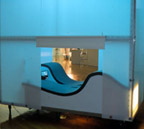
Chance Encounters, Deliberate Interventions
Pursuit of Happiness: Porta-Sky is an urban sanctuary and think tank for two. Periodic trips into the dark relaxation chambers of movie theaters became a routine survival technique for the subjects of modern society. In our post-modern world, where work and leisure have collapsed, the Internet has become a space of convergence. "Porta-Sky" is a physical corollary – a non-space, a hallway from here to there. Providing a personal view of a virtual sky, this video projection space offers alternate imagery to an anxiety-ridden sky. The unit features dual, synchronized DVD video projections, a deployable surveillance blimp and custom designed form-fitting reclining seats.

Situated in the Gallery@Green St (adjacent to the Green St. Subway station on the Orange Line in Boston, MA), Pressure was a site specific installation where computer controlled sensors manipulated the sights and sounds of daily commuting to address issues of accelerated culture and the evolving metaphors for speed and progress. Pressure seeked to explore the psychology and physicality of individuals in the contemporary urban landscape.
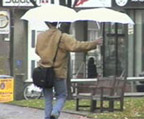
umbrellaSpace is an urban gesture. It is a design solution to a social problem. The intervention adjusts perceptions of boundaries and comfort held by observers on the street. This umbrellaSpace adopts the umbrella as a familiar, recognizable, urban form and recreates it. A permeable space of interaction is transformed from a private, individualized space. An individual in the urban sphere operates this new umbrellaSpace. He or she can choose to invite people on the street into this space. I’m interested in exploring the range of responses this intervention precipitates on the street: sociological, visual, performative. Schwartz is looking for people interested in operating the UmbrellaSpace as well as videographers and photographers interested in documenting the events.
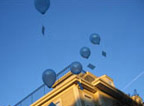
Currently in development at the Berwick Research Institute and on exhibit at Glowlab: Open Lab, Whether/Weather consists of aerial beacons that are dispersed into the weather system. The beacons are helium powered with LED blinkers. Like seeds, these beacons drift with the wind and carry information/stories/memories that hopefully germinate wherever they land. Whether used by an individual or a large organization, the project explores the idea of memory and memorialization through ephemeral and participatory public art. The person who happens upon one of the beacons that has landed, will encounter a message and the option of logging into a website to find out more about where/why the beacon originated. They can contribute their own response at this point and even decide to re-launch the beacon. By logging when/where the beacons are launched and when/where they are found Schwartz is visualizating whether/weather patterns. He hopes that the project will function like a collective 'message in a bottle' and tap into romantic and poetic possibilities of communication and chance discovery.
Posted by jo at 10:02 AM | Comments (0)
September 19, 2005
OPENSTUDIO
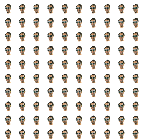
The Creative Economy is Launched
At the AIGA National Design Conference held in Boston this week, the PLW announced our new OPENSTUDIO project. OPENSTUDIO is a system we've been working on for three years now that combines "creativity, collaboration, and capitalism" in an experimental online art exchange system. Our goals are to provide simple, extensible, creative tools for free in an open, web-based environment.
Underlying OPENSTUDIO is a currency system we call the "Burak" (named after the trustworthy Burak himself) that pervades our model of online exchange. If you like a piece created in OPENSTUDIO by a friend, you can buy it with Buraks. You can sell your own as well. What are ownership models of purely digital art? This is one of the important questions we hope to experiment with in OPENSTUDIO. And if people make a few Buraks in the process, that can't be all that bad ...
As of 2AM on September 16, 2005 OPENSTUDIO had its first gasp of air and appears to look like it will make its first step forward next month. Burak, Annie, Kate, Brent, Martini, Amber, Kelly, Isha, Connie, Mariana, and Nikki seeded the AIGA conference on Friday with specially marked cards given out to visitors with "100 Burak" credits for when OPENSTUDIO becomes online to a limited audience. A total of 20,000 Buraks seed the core of the first test of OPENSTUDIO and we are curious how these Buraks will flow within the system. I have 97.20 Buraks myself, how many do you have? [blogged by John Maeda on Simplicity]
Posted by jo at 12:58 PM | Comments (0)
August 31, 2005
Repercussion.org

Virtual Instruments for Live Performance
Repercussion.org is a collection of on-screen virtual instruments designed for live performance and online user exploration. Rhythms and musical phrases can be dynamically composed and altered based on the arrangement of objects on the screen.
The collection is a showcase for the visual representation of freely-formed musical compositions. The project aims to be engaging enough to encourage the viewer to experiment, while being sophisticated enough to allow for a great deal of variation in the sound being created. The actual musical compositions are generated in real-time from a library of pre-recorded midi-based sounds, employing algorithms to map the on-screen graphics to characteristics of the sound arrangement such as pitch, tempo and volume.
The graphics were designed with a wide audience in mind, such that the concepts represented are accessible to a viewer regardless of his level of musical training, while at the same time matching the artist's idea of a basic kit of musical instruments for “jamming”: some drums, some melodies, a way to create chords, strings, etc. To be available to the largest online audience, Macromedia Flash was chosen as the medium. The piece is a work in progress that will be updated and customized. [blogged on media·teletipos]
Posted by jo at 11:19 AM | Comments (0)
July 01, 2005
Games-Language
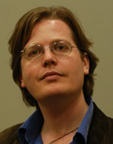
An interview with Noah Wardrip-Fruin
Noah Wardrip-Fruin is a digital media writer, artist, and scholar. His writing/art work creates new experiences of reading through bodily interaction, algorithmic recombination, and exploration of the potential of the network as more than a delivery mechanism. This work has been presented by galleries, arts festivals, scientific conferences, DVD magazines, and the Whitney and Guggenheim museums. As a scholar he has recently edited two books: The New Media Reader (2003, with Nick Montfort) and First Person: New Media as Story, Performance, and Game (2004, with Pat Harrigan), both from MIT Press. Wardrip-Fruin has taught writing for digital media in Brown University's Literary Arts program, New York University's Graduate Film and Television program, and the Summer Literary Seminars of Saint Petersburg, Russia.
His work is discussed in Information Arts (2002), Digital Art (2003), and Art of the Digital Age (forthcoming) - as well as in The Guardian, The New York Times, Technology Review, BBC News, Wired News, and U.S. public radio stories. Wardrip-Fruin grew up largely in California, in the cities of Palo Alto and Long Beach, though his family also spent time in Japan and Boston. He attended Long Beach Polytechnic High School, where his contemporaries included rapper Snoop Dogg, and graduated in 1990. After college, Wardrip-Fruin moved to New York City, where he was an artist in residence and then a research scientist at the New York University Center for Advanced Technology and Media Research Laboratory (1994-2001). At NYU he collaborated with computer graphics pioneer Ken Perlin on the design of next-generation interfaces and received an MA from NYU's Gallatin School, 2000. After NYU he became a professor at the University of Baltimore, where he collaborated with Stuart Moulthrop and Nancy Kaplan on the design of the curriculum for the newly-launched School of Information Arts and Technologies. From Baltimore he moved to Brown University, where he works with Robert Coover and others on exploring the literary potential of digital media (especially the immersive virtual reality "Cave"). He is currently a Teaching Fellow at Brown University, where this interview took place on April, 2005. We talked about Games, Language, Digital Literature and the Future of the Game theory.
Cicero Inacio da Silva* interviewed him.
Cicero Inacio da Silva: You have recently edited a book (First Person) on new media, story and games. Why are you interested in games?
Noah Wardrip-Fruin: For a couple reasons. I think that -- on a fundamental level -- playing games, performing for each other, and sharing stories and poems are deep human activities. All these activities have come to digital media, in one way or another, and I wanted to create a book where people who were thinking about all of these would be in one context, and could actually respond to each other -- so we can start to, through that dialog, think about the field in a broader way. This is part of the motivation. But another motivation was that, although I think this is changing, there was a sense that games were a kind of the Other, the separate thing in digital media. Games were very successful commercially, but very uninteresting from an artistic point of view, from a scholarly point of view. So I also wanted to challenge that a little bit and say: "Yes, games are one of the most popular forms of digital media, but they are also interesting art work, interesting writing, interesting design, and I think that scholars and artists have to contribute to our discussion about making and criticizing games."
CIS: What do you think about the relationship between games and literature?
NWF: There are three relationships that I want to think about. One is the relationship between games and the traditional literature. So, someone like Warren Motte, who has written a book called Playtexts (from the University of Nebraska Press), talks about writers, from the surrealists to the OULIPO, and many others groups, who used play as a way of thinking about their writing process, who used play as a way of thinking about the reading process that they wanted, how the audience can go through the text and engage with the text. That is one of the relationships that I want to think about. Another is that some early computer games were very textual, and some pieces were quite literary; others were graphical, and maybe literary in some structure, but not in the language that they contained. And what happened after that was that our ability to deal with language computationally didn't develop as quickly as our ability to deal with graphics. In the 1970’s and in the early 1980’s we tried to deal with language computationally using ruled-based artificial intelligence techniques, and that ruled-based artificial intelligence…
CIS: You mean an algorithmic process to produce a text or work…
NWF: Yes, right… I'm talking about processes for recognizing and producing natural language. At the moment we have techniques that work very well using statistical techniques, operating with large bodies of language. We use the patterns that we see in these large bodies of language to try to interpret and produce language, and that is more successful. In the 70’s and in the 80’s, we used ruled-based techniques, and we got some results, but could not go further. At the same time, computer graphics took off. Computer graphics driven by military applications, driven by Hollywood, and now driven by computer games, got better and better. So computer games, maybe for that reason, maybe for others, became more and more focused on graphics, and there wasn't much to say about that in terms of literature. Now, I think that is changing. Computer game companies are hiring full-time writers. They are hiring writers who have experience, who think and write through and for procedures. At the same time, our ability to deal with language, computationally and algorithmically, is getting better. So, the second issue to think about is how these things may be producing a new kind of literature, connected to the field of computer games. Now, most computer games are becoming better written, but often toward the goal of being like Hollywood blockbusters. However, I think there is a growing alternative game movement. And the alternative game movement may produce work as well written as good plays or good movies, instead of as the bad movies. The third interesting relationship is thinking about how literary structures may be important to games that it doesn't make sense to think of as literature. An example is quest structures. Espen Aarseth has written about this. Janet Murray has written about this. We don’t want to think about all computer games as literature, but we can better understand some of the structures by using literary models.
CIS: Actually, my third question has something to do with your answer… how do you see the game market with this explosion of these new game technologies, and with the big media companies (like Disney, Warner, etc.) getting inside this field?
NWF: Well, in the US we had our first big boom in games in the early 1980’s, and people like Warner did get involved; they did things like buy game companies. And this was huge in the US, because people were playing so many games… and then came the big bust. The computer game industry entered in a kind of collapse. Some people have interpreted that collapse, in part, as having to do with the intrusion of the big media companies. This leads to people saying: “Big media companies don’t understand games,” and so on. I don’t know if I believe that. It's hard to believe that big media companies categorically can’t understand games. But it is true that, right now, the big games companies are people like Electronic Arts, and people like Microsoft, although also people like Sony, and Sony does have a significant presence in other kinds of media. It'll be interesting to see how these big companies play out. All that said, I think right now most computer games are produced on the model of big media, where we have a big studio that spends a lot of money and takes a big risk trying to create blockbusters hits. And everything that is not a blockbuster hit is a kind of failure. We need to change that. I think computer games are only going to grow as an art form when they become much more diverse that they are now, in terms of their models of production.
CIS: Do you think that this “games invasion” is a fashion, or up-to-date, like the TV in the 50’s and the internet in the 90’s?
NWF: Well, I think TV in the 50’s and the Internet in the 90’s were marked by a struggle to understand something, and this is a struggle, probably momentary…
CIS: Let me situate my question: I think that the internet changed many points about our culture, and I think that, even today, we still cannot understand exactly what happen through the internet and on the internet. Now we have this game culture, which also uses the internet. Today, we still are thinking about what is the Internet, what kind of impact it has in our representations. I think that it is a great impact, it is something important…
NWF: Right. I am thinking that my mother has a laptop that she carries with her, not just when she travels, but she carries it around the house, you know…
CIS: My parents do the same...
NWF: Right. And when she is thinking about something, and she wants information about it, she opens her laptop and she does a web search. And, usually, the information she wants is right there. I think we haven’t finished thinking about what that means for our culture. For one thing, I think a large group of people assume that the online world is going to be like a library, with a lot of information available for free. That is very powerful, because the most powerful thing is what people take for granted, and what they take for granted is that the internet is a library, and if you try to change the internet and stop the internet from being a library they are going to say: “What?” They know that the internet is a library, and we can only see how that developed in retrospect. In the 1990’s we were saying: “What is the internet going to be? Is it going to be like cable television?” Now we know that for people like my Mother the internet is like a library (and email). We don’t know yet about computer games. We don’t know what sort of dominant models will develop, or if they will be like the current dominant models, or how they will challenge our expectations. But, certainly, for those in their 30’s and younger, we have a group of people who expect games to be part of daily life: not set apart in the arcade, but played on a console with a television; or played on a computer where they also do their work; or played on a device that they can keep in their pocket, like a Game Boy. So I think that it is taken for granted that games no longer are separate, and that will be, maybe, one change that we will start to see.
CIS: Yes, it was interesting when I was playing a certain game and, inside the game, I found I could go to the bank. It impressed me that while I play I am able to go to the bank, check my balance account, or transfer money to someone. In some cases, you can go to the supermarket and do some shopping. Also, we start to see a lot of ads inside the games...
CIS: What do you think about the critic view on VR, related to aspects like “reality” and “virtual”? Do you think that, with the VR, we are trying to build a new cave for our lives, as Plato pointed out, or that we are trying to understand how we are what we are? Do you agree with the point of view that we are outside Plato’s cave, and now why come back? We are already out, and there is nothing interesting outside, so now what?
NWF: (laughs…) If I remember Plato's cave correctly, there were chains, and we could only see shadows. OK, this is not the literal cave, and not the literal chains, either. So one thing that interested me about a lot of theories of virtual reality was the assumption that we could use VR to reproduce normal spaces, and to create impossible spaces. But I think that computer games are the closest thing that we have to popular Virtual Reality, even if it’s not stereo display. People move through virtual spaces a lot. Most of these virtual spaces operate by the same physics, as much as possible, as our reality, or contain structures as much as possible like buildings in our reality. It’s much more popular to play a game like Counter Strike than it is to play a game like an abstract shooter, where you can move through impossible spaces.
CIS: Like Doom...
NWF: No, let me think of a good example… I'm trying to remember the names of a couple of games made by a guy called The Yak, where what you do is fly. You fly in an abstract vehicle through abstract spaces that are made up with shapes and colors. And some are beautiful spaces, the kind of spaces that I think a lot of early Virtual Reality theorists imagined. And, of course, you are playing a game, and you blow up these beautiful things, and it makes great sounds when you move through it. But this is not as popular as shooting things in much more normal spaces. However, that said, we don’t really know what will become popular for a certain generation. It could be that when people who are now in their 30’s are in their 50’s they will want these impossible spaces. Or could be that they will want more and more realism, they will want The Sims. The Sims is about our everyday life, but maybe they will want even more reality: the people acting more like real people, the economy acting more like the economy. Who knows? It’s very hard for me to predict.
CIS: The representational aspect of the games is one of the most important points to discuss in game theories, because it implies in what somebody can do in a game: kill, explode, be a terrorist etc. And in the games we need a purpose or objective to continue playing, that always include kill, buy, sell or explode. Do you think it is possible to produce a game in witch an objective doesn’t exist? If it’s possible, what kind of game will it be?
NWF: First, I need to say that in some games, like Tetris, you don’t blow up anything and you can’t win. There is no objective about winning; the objective is only about not losing for as long as possible. I think this is kind of interesting, because we tend to think that Americans always want to win. And Americans love Tetris, Space Invaders and a lot of such games. Of course, you can have a high score -- maybe having a high score it the closest to wining -- but you always lose, and you need to keep from losing as long as you can. But, yes, I think that there are going to be, and maybe already are, digital media experiences that share a lot of traits in common with games, but have different kinds of goals and different kinds of actions that you take. But I’d say that if you don’t have game kinds of goals, probably we should not call the experiences games anymore. Maybe we should call them another kind of digital entertainment. So for example, do you know projects called Dogz, Catz, and Babyz? People like Andrew Stern and Adam Frank have worked on these projects, where you have just a little pet that lives on your computer and...
CIS: You published something about this in your book, I think in one of the discussions about an article…
NWF: Yes, in one discussion. Andrew Stern is one of the respondents in the book, and he talked about those projects. They are a kind of project in which you can explore your of relationship with the character, and I guess, from our point of view now, they might seem a bit primitive. You know, the graphics were simple, the artificial intelligence was simple, and who can imagine what will happen when things like this go further? Similarly, there are projects where the creators really focus on things like the story. Andrew Stern collaborates with Michael Mateas (who also has a piece in the book) on a project called Facade. In this project what you do is: you go over to have drinks with some people who you introduced and who are now married, and their marriage falls apart during your visit, but it falls apart differently, depending how you interact. It falls apart horribly, almost no matter what; there isn’t a way to win, there isn’t a score, and you don’t have to have a high score, but people play them. It’s not been publicly released, but I've played it, and replayed it, and a number of people that I know, who have received copies of it, are playing, and playing again, and playing again. Not because they want to do better, but just because they want to understand the space of possible stories. In some ways, it is a kind of postmodern fiction, which makes you think that the story can happen this way, or can happen that way, with much left to chance, and where you play the part of “chance.”
CIS: The game theory is nowadays exploring new theoretical interfaces, and some of them are narrative and literature. Some scholars are producing a lot of texts explaining the resources and the advantages of using games in the educational and pedagogical field, pointing out that games are easy and closer to their reality than books are. Do you agree with this point of view? What do you think of the critics that say that this student will be a person that just reacts to some specific actions, and that he or she will actually not think about it, or even elaborate some new point of view about his or her own situation? Or in other words, quoting Lyotard: “this is the perfect world to capitalism”. We will have just action and reaction. What do you think about this? How can we differentiate when somebody is responsive to a situation or when he or she is really thinking about a problem, even playing a game?
NWF: Well, one thing that we might have to think about is where the graphics technology for games comes from. A lot of funding is from military sources, and their aim was to create flight simulators and battle simulators. The reason the military put a lot of money into developing things like flight simulators is not because they thought that books are bad, but because maybe there were things that you can learn from the simulation, but you can’t learn from the book, or that are very hard to learn from the book. For them, these flight simulators were not an alternative to giving someone a book about flying, but were an alternative to actually putting someone in a cockpit of an airplane, an alternative to real world action. I think, in some ways, that what we need to think about is the goal of games in education. And the goal of games in education probably should not have to be trying to teach things that we can learn from books, but to teach things that we can’t teach with a book. And to teach things like these we might be able to simulate things that we can do in the real world, or things that we can’t do at all. People try to do this, for example, using games like SimCity to teach kids about cities. But there we run into another problem: Sim City does not come from nowhere, it is based on a research by an MIT guy called Jay Forester. Forester did a lot of work trying to understand urban planning through simulation, but his cities were very distorted cities -- for example, his cities have no suburbs, so we have children…
CIS: I also think that he never saw a “favela” in Brazil…
NWF: Yes, and if you have children trying to learn how to understand cities, and trying to learn how to understand cities through a simulation, that simulation will be always authored by people, and will always encode some of the ideological assumptions of those people. Part of what we try to do in education is to help students to develop a critical view of what they read in books; not just learning information, but also learning to think about what is not there, what the author doesn't say. What we now need to consider, in thinking about children learning through simulation, is how to develop a critical view of what they learn from the simulation, how they can understand the rules that make the simulation operate, and what are the limits and the blind spots of these rules. How children can develop that is a very tricky question; if they don’t develop that, then they are just reacting, they are just doing that simulation in a way that we don’t like. And the answer, maybe, is the same that we had from written literature, where people, or part of the people, achieve a critical view of what they read, and then they learn to write, and they learn about the writing process, and how with the writing process all these things came out. Maybe children will have to learn to author simulations, before they will be able to understand the relations, limits, and ideological field of games, and are able to be critical about simulations.
CIS: What do you think about the images in the games, aesthetically speaking? I mean, in 90% of the games we have, more and more, an exact reproduction of what we call reality. In the Renaissance, we have the same thing, and now, after Walter Benjamin, after Susan Sontag, after all the critics of the metaphor and representation, we are producing again the same reproduction of reality. Why do you think that we are doing this, if the computer can create images without any relation, or need, to capture this named reality?
NWF: One of my favorite phrases from a game theorist named Eric Zimmerman (and he has a lot of pithy phrases) is: “Cinema Envy”. He says that a lot of the game industry is caught up in “Cinema Envy”, and in part because cinema is taken seriously as an art form. But a lot of it is just because they like films, and because games right now can’t reproduce the cinematic experience, and because cinema is seen as desirable, and because you can be lauded as a computer graphics researcher for producing something more realistic. I think there are a lot of forces that drive games to increased cinematic realism, and, at some point, that will exhaust itself. I think, at some point, you will be able to, in real time, in response to what the users have done, produce something that is not distinguishable from a videotape, as good as the quality that you can get from your television. We’ll probably have to go that far before non-realistic rendering really begins to take hold. Right now, there are occasional games like Viewtiful Joe, done in cartoon style, where the imagery is really trying to reflect the content of the game in a non-cinematic way. But, right now, almost all the work that is trying to reflect the content of the game visually is drawing from cinema. Games like Max Payne are trying to look like a noire movie. They are not trying to invent a new way of looking, that only will be possible with the computer. Having said that, I think that we need to remember that movies are starting to be influenced by computer games. Maybe there is a new aesthetic form emerging from that as well. All that said, personally my interest in games is not usually driven by what the game looks like, and I agree with those critics who say that, regarding most serious players of games, they are looking through the imagery to the play. Eventually, what the game looks like becomes only a way of understanding the way that the system works. Games have a meaning in terms of play, and not only in terms of what happens visually; most games are about accomplishing something in terms of rules and goals, and those are not visual. On the other hand, I'm reminded that Peter Molyneux’s game studio is working on a game called “The Movies”, and the result of play is to produce trailers and snippets for movies, so your game goal is actually a visual goal, and those visuals try to have a style, but again it is a style based on movies, so who knows…
CIS: Do you think it’s possible that in the future a “game critic” will write about a game in an analytical and critical (scholarly) sense? I’m asking this because I think that the majority of the critics of Game Theories and digital narratives doesn’t quote or sometimes even know authors or important discussions about literature and literary criticism, and we know that this field had produced a lot of discussions about narrative, form, meaning, representation, reality, and one of the most important: ideology. Do you agree with this point of view? I think that some points of Digital Literature, and the use of the name “literature” itself, sound to me sometimes just as an attempt to give more credibility to this “digital” field, and what I see is a few authors discussing criticism, related to these “digital” topics of writing.
NWF: I think that one useful thing to do is to look at something called the “Scandinavian School” of games scholarship. Part of the reason is that this Scandinavian School -- and I am talking about people like Markku Eskelinen, Espen Aarseth, and Jesper Juul -- so these people, many of them are deeply engaged with contemporary literary criticism. They are very aware, and a number have backgrounds as literary scholars, so they know the history of literary criticism. And yet the work that they are doing is seen by some literary scholars as very naive, because their work is often quite formalist, trying to talk about the formal characteristics of games, or how you understand the passage of time in a game, and so on. People say: “We have been through this phase in critical history”. But their point of view is: “No, we haven’t been through this. We have been through this in literature, we have been through it for films, but we have to go through it again for games”. Because games are fundamentally different. And only once we go trough this period of formalism can we begin to take that formalism apart and expose its limits, and talk about the blind spots of the earlier generation -- but there has to be a first generation. Some people disagree, and they may also come from a literary background. Let’s say the Georgia Tech group -- people like Janet Murray, Ian Bogost, Michael Mateas, and Jay Bolter -- who have significantly less interest in formalism than the group I associate with Scandinavia, though also work on projects with names like "game ontology." Henry Jenkins -- who doesn’t come from a literary background, but from a media studies background -- in the First Person book talks about the Scandinavian Vikings versus the North American Eagles. There's some perception of conflict, but also a humorous attitude toward it. And we shouldn't forget people like Gonzalo Frasca, Nick Montfort, Stuart Moulthrop, and others who can't be put in a camp (or the fact that Gonzalo's been both at ITU Copenhagen and Georgia Tech). I guess I would say that, personally, I find a lot of valuable work in both groups. I think neither group is ready to have games just talked about in terms of current literary theory. I think that both groups agree that we need to develop some new perspectives to understand that games are procedural and interactive. If we don’t understand those things, and just apply perspectives from literary studies, we will misunderstand this experience. But I think we'll make progress. And just the same way every major university has cinema scholarship, I have no doubt that we will not have any serious university without game scholarship.
CIS: …and now, a hard question: do you play games? What is your favorite?
NWF: (laughs…) Yes, I play games, and playing games is like reading: it takes a lot of time. I mean, you're never caught up, you always need to do more than you have done. I think that is one of the advantages that cinema scholars have over us. You know, they take two hours to watch a movie. And you take so many hours to play a game, and to interact in a complex novel. You can go and survey the work of a major director in a week -- and if you go through a series of works by a major game company it'll take many times that. Anyway, my first experiences with games were with things like the Infocom games, like Zork, and maybe earlier things like Hunt the Wumpus. Then, when I was in high school, I played a lot of Tetris, and we had a Nintendo game console. I'm also passable at arcade games like Ms. Pac-Man and Centipede and Pole Position. Right now, I would say I've gotten to the point that my favorite things are experimental. So I really enjoy things like Façade, though I also enjoy playing blockbusters like Fable. But in some level, it’s not the same; the people who are doing Fable have an obligation to their funders to create something that will appeal to a really wide audience. And things with such appeal, not meant for a narrow audience, don't grab me in the same way.
CIS: Thank you and I hope that you can come to Brazil as soon as possible to work with us in future projects, and maybe develop a scholarship in the game field.
*Cicero Inacio da Silva is a Visiting Scholar, Brown University (Spring Term 2005) with a Fellowship supported by the Foundation for the Coordination of Higher Education and Graduate Training (CAPES/MEC/Brazil). Assistant Professor, Catholic University of Sao Paulo.
Links:
Warren Motte: http://www.colorado.edu/FRIT/profiles/motte.html
OULIPO (Cent mille milliards de poèmes: http://x42.com/active/queneau.html e Raymond Queneau: http://www.queneau.net)
Espen Aarseth: http://www.hf.uib.no/hi/espen/
Janet Murray: http://www.lcc.gatech.edu/~murray/
Electronic Arts: http://www.ea.com/
The Sims: http://thesims.ea.com/index_flash.php
Tetris: http://www.neave.com/games/tetris/
Dogs, cats and babies: http://www.quvu.net/interactivestory.net/papers/stern_emotionartifacts1999.html
Facade: http://www.quvu.net/interactivestory.net/
SimCity: http://simcity.ea.com/
Viewtiful Joe: http://www.capcom.com/vj/
Max Payne: http://www.rockstargames.com/maxpayne/
The Movies: http://www.lionhead.com/themovies/index.html
Markku Eskelinen: http://www.dichtung-digital.com/2004/3-Eskelinen.htm
Hunt the Wumpus: http://www.wurb.com/if/game/442
Infocom games: http://infocom.elsewhere.org/
Zork: http://www.csd.uwo.ca/Infocom/zork1.html
Gonzalo Frasca: http://ludology.org/staticpages/index.php?page=20030129004146960
Jesper Juul: http://www.jesperjuul.net/
Ian Bogost: http://www.lcc.gatech.edu/~bogost/
Michael Mateas: http://www-2.cs.cmu.edu/~michaelm/
Henry Jenkins: http://web.mit.edu/21fms/www/faculty/henry3/
Peter Molyneux: http://pc.gamespy.com/pc/the-movies/513182p1.html?fromint=1
The Yak: http://www.llamasoft.co.uk/jeff.php
Posted by jo at 05:01 PM | Comments (0)
May 16, 2005
BlogStarTheater
![]()
Remaking Other Peoples' Blogs
BlogStarTheater is a weekly web show in which people create theatrical reinterpretations of strangers' blog entries, in video format. Anyone can produce and submit an episode, and every blog is a potential source of material. The project, an experiment in participatory mass media, is a show by everyone, for everyone, and about everyone. It was created at the Interactive Telecommunications Program, NYU, by Laura Garcia-Barrio, John Geraci, Luna Vega, Pete Vigeant, and Akio Wada. The idea is to examine the tension between blogging as a form of public diary versus blogging as a form of broadcast media. [via]
Posted by jo at 11:45 AM | Comments (0)
May 05, 2005
LIVE FROM PARADISE
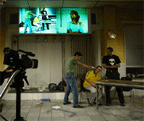
Three Venues, Four Performances
Nine people in three different cities perform together in one single production. An empty shop in Birmingham, a disused church in Colchester, a former courtroom in London merge to become a fourth imaginary space. Three audiences, one in each city, witness the performance simultaneously.
Live from Paradise is a global internet project that breaks new ground in live performance. The show takes place in three different locations which are linked by video streaming to create a simultaneous combined performance, telling a story that uses cinematic language to create a fourth imaginary space. In each place the audience witnesses a live performance and a large-screen video projections from the other two venues. The resulting single narrative is like a report transmitted from somewhere metaphysical – live from paradise. SATURDAY 21 MAY to SATURDAY 4 JUNE [no performance on 23 May] at 7:30pm
Station House Opera’s Live from Paradise is a co-production with De Daders, Amsterdam and premiered in October 2004 performed simultaneously in three apartments across the city. In 2006, Live from Paradise will be presented in three cities in Europe and finally at three locations on three different continents.
LONDON
The Courtroom
Toynbee Studios
28, Commercial Street
London E1 6AB
Box Office: 07952 769633
http://www.stationhouseopera.com
COLCHESTER
Presented by Colchester Arts Centre
ST. Martins Church
West Stockwell
Colchester CO1
Box Office: 01206500900
http://www.colchesterartscentre.com
BIRMINGHAM
Presented by Fierce
Level 3
The Mailbox, Wharf Side
Birmingham B1 1 XL
Box Office: 08707301234
http://www.fierce.info
Live from Paradise is produced by artsadmin Funded by Arts Council of England
Contact Judith Knight email: judith[at]artsdmin.co.uk
tel: +44 (0) 20 7247 5102 fax: +44 (0) 20 7247 5103
Artsadmin, Toynbee Studios, 28 Commercial Street, London E1 6AB
http://www.artsadmin.co.uk
http://www.stationhouseopera.com
Posted by jo at 09:48 AM | Comments (0)
April 19, 2005
Parking Public
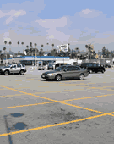
A Clash of Desires
With Parking Public, The Temporary Travel Office explores the largest openspaces around Hollywood Blvd, privately owned parking lots. The Travel Office is also interested in the relationships between the utopian spaces we all desire and the not-so-utopian spaces we end up inhabiting. This clash of desires and social realities is especially present in Hollywood, one of the centers of global utopian myth making. In order to bring these two worlds together, fantasy and reality, the Travel Office is distributing flyers on the windshields of parked cars soliciting answers to the question "what is your utopian destination?" By calling a phone number provided on the flyer, participants can leave a message describing their
dream locale, which is recorded on an audio blog. Because of the global network of influences on ideas of the utopian (those of us in the US often describe a tropical setting based on postcards and movies) as well as our material environment (the international distribution of goods and services), the survey is also open to people residing outside of Hollywood. The results of the survey are displayed on the web as they come in. A map of private parking lots and images from a walking tour are available on the site as well.
Posted by jo at 10:19 AM | Comments (0)
March 25, 2005
The Matrix Online

Actors Hired to Live In-World
"This is amazing news: The Matrix Online is employing 20 'actors' - live humans - to live in-world, interact with players and create storylines.
Since the close of the beta, Warner Bros. Interactive Entertainment announced that it has employed a troupe of 20-odd people whose job it will be to enact narrative scenarios in The Matrix Online live. These people will assume the roles of popular characters, interact with players, and generally move the stories in ways that only live "actors" can. And though it appears that the story hasn't officially commenced, a few players on the Method server were treated to a pretty slick sample of it this afternoon: an extended pep-talk by none other than Morpheus himself." [via Wonderland]
Posted by jo at 02:02 PM | Comments (0)
March 08, 2005
dotdotdot
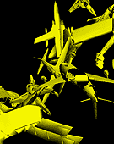
Glimpses of Unseen Places
A landscape from beyond the edges of the browser window that gives glimpses of unseen places. dotdotdot is constructed using several different motion capture systems and improvised performances creating abstract digital portraits. These animated avatars move and react to players inputs within an online virtual environment.
"dotdotdot provides a good example of the ways in which practitioners using old media and new media can collaborate to produce an ongoing body of work challenging the canons from which each component of the work orginates. Using motion capture, web tools, animation, games engines, sound and movement dotdotdot presents a series of animated interactive vignettes. These can be manipulated in terms of speed, sound, rotation and movement so that the basis of the range of visuals on offer stays the same but also so that the viewer/player can change them to accommodate their own preferences. [via Rhizome]
Each work has an Igloo signature but it allows the viewer to manipulate, play and be creative - after years of artists striving for truly interactive work, dotdotdot knowingly works with the limitations of interactivity in order to give the piece a characteristic style.
The viewer/player is presented with a range of choices involving genre orientated radio stations (you can choose drum & bass through to chart music) and a variety of visuals such as red, dot, bendy and plane. All these permutations and combinations together with the ability to interact with the animated figures in terms of speed and rotation challenge the viewer to think about the visual and audio styles in relation to their own experience of video, sound, animation and movement drawn from a variety of sources in day to day culture.
The project, which has been ongoing, is the product of Ruth Gibson, a dancer who is specifically looking at development of movement in the context of motion capture, and a programmer Bruno Martelli, who is interested in pushing the limits of technology in real physical contexts. The artists draw in expertise and collaborators as and when they need and the quality of the work is enhanced with every reworking. Their animations reflect these concerns with their 3D quality combined with recognisability of the human form in spite of the abstractness of the animated shape." Helen Sloan, Director - SCAN
Posted by jo at 07:38 AM | Comments (0)
January 24, 2005
ASL [v.f.] 1.0

Age, Sex and Location
ASV [v.f.] 1.0 was the first version of the "chatroom plays"--by Vincent Makowski/AmsterdamEditions--performed during the Internet Fiesta and the Irish Museum of Modern Art's Net.art exhibition on March 23rd, 2002.
"The chatroom plays just slightly twist the original purpose of chatrooms. With ASV [v.f.] 1.0 (which in English should rather be ASL for Age, Sex and Location, the most basic self definition given by chatters to those they interact with), I intended to use a chatroom as a theater stage and asked professional actors along with some people having no acting experience to play a role we defined together...(N)one of the actors' cues were pre-written and we had no rehearsal whatsoever. Furthermore, we never met before and (or) during the performance. Our communication only went through e-mails exchanged between the actors and myself.
They were asked to define their own role and we built their character and personality together through e-mail exchanges from then on. No plot was defined prior to the performance: I was not interested in creating a linear fiction but rather a real time remote interaction between the actors. I wanted to push live performers (professional actors) to experiment the sole use of written words, in opposition to their actual physical presence on a stage. The chatroom plays allow me to raise the question of live performance on the internet. The time necessary to type the cues (which varied from one actor to another depending on how fast they could type) generated delays in the answers to specific cues. This succession of unrelated cues could be read as something close to the "cadavre exquis" developed by the surrealists. Even though data was instantly transmitted simultaneously to all the actors' computer screens, the keyboard operating introduced a stretch, a delay preventing real time exchanges to be experienced. This paradoxical man/machine ability and time was, more than the meaning of the cues themselves, at the center of this work."
Posted by jo at 02:57 PM | Comments (0)
January 22, 2005
Project Molly

Light Lunch with Molly
"Project Molly is a series of roaming interactive webcasts captured live using a wearable wireless audio/video acquisition system by artist Nichola Feldman-Kiss. Please interact with Project Molly live for light lunch and conversation via internet relay chat at the Project Molly interface."
Project Molly was a performance art/research innovation; it used a Xybernaut wearable computer with a head-mounted audio video acquisition and display system to stream a live video feed to the internet via wireless connection. The prototype real net video performances interactively linked the remote audience with the real time audience/performers via Project Molly’s personal a/v surveillance and chat interaction. Each consecutive interactive webcast incrementally evolved the project molly interface and knowledge database. Ultimately, the interface tracked project molly's movement through real space and captured streamed video into a data archive that is indexed and searchable by a variety of terms.
Posted by jo at 12:16 PM | Comments (0)
The Telepresence Garment
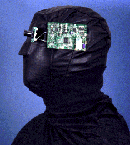
Engaged by Others, Remotely
"(Eduardo Kac) first conceived the Telepresence Garment in 1995 to investigate the notion of the mediascape as an expanded cloth; i.e., to consider wireless networking as a new fabric that envelops the body. The Garment, which I finished in 1996, gives continuation to my development of telepresence art. This time, however, instead of a robot hosting a human, we find the roboticized human body itself converted into a host. The Garment was designed as an interactive piece to be worn by any local participant willing to allow his or her body to be engaged by others remotely." Continue reading >>
Posted by jo at 12:10 PM | Comments (0)
January 19, 2005
F2T (Free to Talk?)

SMS Rapper Slang
F2T is an interactive musical installation about "argot" and its different contemporary applications. F2T, a creation by artists Frank Plant (United States) and Thomas Charveriat (France), combines sculpture, robotics, hip hop, and SMS messaging to explore the ways technology shapes the development of language, particularly new forms of slang. Viewers interact directly with the artwork by sending it a short text message from their mobile. Once received, the SMS is scanned for frequently used words and, when a match is found, the four elements are activated. The main piece, "Rapper" begins to twist and wave his hand while mouthing a rap based on the message sent, the new lyrics culled from more than 130 different hip hop phrases written by Amsterdam-based lyricist and composer Jim Barnard. The rest of the piece is simultaneously set into motion: "Boom Box" starts flashing and blasting out the song while "Joy Ride" a bouncing low-rider, and "Shake Ass" (looks like it sounds) begins to move, triggered by ambient sound sensors. When the song is finished, a thermal printer spits out a souvenir with the original SMS and the words of the "Rapper." (via Rhizome)
Posted by jo at 02:50 PM | Comments (0)
December 28, 2004
Confess

Web of Truth
Begun as a private experiment, New York-based artist Stewart Smith's Confess project soon took on a life of its own by virtue of its own logic: users sign up with anonymous accounts, and are given the opportunity to bare their souls into an internet confessional. In return, they are allowed to view the anonymous confessions of other users. Users can comment (again, anonymously) on what they view, and see the comments of others on their own secrets. The only control that the process has is a rating system; the 'better' one's confessions are rated, 'better' are the confessions one will see, setting up an addictive emotional economy. Sherman has kept the presentation deliberately minimal, giving the site a personality that is both earnest and vaguely unnerving, reflecting the ambiguous feelings provoked by impersonal honesty. The effect of sitting down in front of the screen and being asked to communicate without consequences is strangely powerful, and the results stir interesting thoughts about the fate of sincerity on the web. - Ben Davis, Net Art News, Rhizome, December 20, 2004.
Posted by jo at 09:00 AM | Comments (0)
December 27, 2004
netzwissenschaft
![]()
Emerging Infrastructures of All (Inter)net Research
Dr. Reinhold Grether's network research | netzwissenschaft site maps the "emerging infrastructures of all (inter)net research endeavours. net.science as an anthropology of connectivity is trying to overcome the constraints of specialist method transfers on net matters. the protuberance of technical networks necessitates a professionalization of human net knowledge. neither the isolation of concepts as in basic research nor the encapsulation of processes as in applied sciences will ever be able to adequately describe the complex autopoiesis of networks. net.science is undoubtedly developing into a scienza nuova of its own right."
Check out his Mobile Art and Virtual Performance research areas.
Posted by jo at 04:45 PM | Comments (0)
December 08, 2004
Simultaneous Translation - A Networked Collaboration
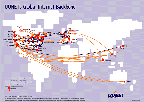
Distance and Time Through the Lens of Streaming Media
Friday December 17 & Sunday January 16, 2004; Madrid, Spain 20:00 (19:00 Greenwich Mean Time. 2PM Eastern Standard Time); Concert and live internet audio stream. Developed by John Roach with Miguel Ramos and Willy Whip Performers: Carlo Giordani, John Hudak, The Same Room Left, James Rouvelle, Mike Rosenthal, John Roach & Miguel Ramos.
Simultaneous Translation is an international networked performance that draws connections between language and the internet. Just as language has changed over time and as dialects have evolved as groups of people moved geographically from place to place, so in this project, live sound will be effected by time and distance. Audio created by the participants in Madrid, the US, Germany and Italy, will be broadcast live on the internet. [Related]
Posted by jo at 11:54 AM | Comments (0)
December 03, 2004
Thank You

altruism, interaction and exchange
Please visit the exhibition Thank You—an activist art project conceived by Danish/Australian/U.S. group Wooloo Productions (I’m in it!). It launched yesterday on World AIDS day, December 1st, 2004. Thank You "confronts its audience with the relationship of exchange between Africa and the West. Dealing specifically with issues of exploitation and disease, the project utilizes possibilities afforded by online technology to illustrate the absurdity of today’s co-existing economic reality." [blogged by Mary Flanagan on grandtextauto.]
The show is meant to be a platform to critique altruism and exchange while at the same time help real people (this contradictory stance of critical activism is driving me to read a lot of Negri, by the way–and much of his writing is liberated!!).
Wooloo Productions invited one American (mary) and four South African artists to create interactive artworks. Each viewer interaction with the works results in the release of one South African Rand (approx. US$ 0.15) towards the cost of setting up an HIV Education Center in Khayelitsha. So when visitors click on projects they help raise $$– we can collect quite a large sum from donors to help build the center if people visit our works. So click away!! The Thank You show takes place simultaneously in two physical locations—Artists Space and a public stage in Khayelitsha, Cape Town, South Africa—as well as online. If you’re in nyc, visit Artists Space (38 Greene st, 3rd Floor). In Khayelitsha, its on the center stage area at Site B, where Wooloo member Sixten is acting as host for the show . The works are presented on computer monitors in the two project locations from Dec 1 - 11 2004. There is a video hook up linking the sites.
I made the game [six.circles] specifically for this show. Players connect triangles to form shapes, but while playing, must introduce illness into the community. Players have to negotiate and sacrifice to cooperatively prevent the spread of the disease or cure pieces while still attempting to win the game by creating “six circles” out of the shapes. A circle cannot be "closed," however, unless it is 1/2 infected, showing that communities must work together and embrace problems as a whole.
Right now [six.circles] is functioning as a game for two players on a local machine, with cross-net gameplay coming this weekend and single player mode soon to follow. Lots of people to thank for inspiration and help, including Ruth Catlow, Joline Blais, Jon Ippolito, and Sebastian. I’m also working with the amazing Chris Egert, an old friend. He is technical engineer on the project and he’s faculty in RIT’s Information Technology Dept (where there are ruminations of gaming program afoot). You can also visit the project from my website, which has more writing about the [six.circles] game.
Posted by jo at 01:28 PM | Comments (0)
November 29, 2004
LiveForm:Telekinetics

Intertwined Networks
The Waag Society for Old and New Media has in 2004 commissioned Canadian artists Jeff Mann and Michelle Teran to produce and present the second iteration of the LiveForm:Telekinetics Project. LF:TK involves the creation of a series of site-specific installation/performance works connecting hybrid physical/virtual spaces using streaming media and networked kinetic objects. The commission is part of the Connected! project of Waag Society, a two-year programme of performances, lectures, workshops, installations, and emergent events exploring collaborative networked media and live art.
The LiveForm:Telekinetics project is envisioned as a laboratory that examines the intertwining of social networks and social spaces with their technological counterparts. As a work of art, it challenges and expands the notion of performance, the relationship of the artist and audience, production and exhibition, and ideas of locale and presence. The project creates hybrid installation/performative works, augmented with electronic devices and network systems, to create shared spaces and live social situations. Two-way streaming media such as video, sound, and graphics, are used to connect together physical sites via the Internet. Everyday physical objects within the environments become kinetic communications interfaces, animated with embedded sensors and actuators. In LiveForm:Telekinetics, mediating technologies are human-scale, built into architecture, furniture, decorations, utensils, toys, and the bric-a-brac that we surround ourselves with. Read more.
Posted by jo at 10:22 AM | Comments (1)
November 07, 2004
DEAF04

participatory locative sound imaging hoedown
Dutch Electronic Art Festival (DEAF) is a biennial international festival for electronic art, presented by V2_, Institute for the Unstable Media, in Rotterdam, The Netherlands.
TRAMJAM V.03- ROTTERDAM RUSHHOUR by Mumbai Streaming Attack is a multi-track- multi-driver mix hub streaming jam session of Rotterdam city vibe, orchestrated in sync with the city's tramlines' routing schedule. Play along November 12 if you're in Rotterdam. Mumbai Streaming Attack is a networked performance study group currently based at SNM/HGKZ in Zurich.
Also at DEAF04 (and simultaneously in New York, Brisbane, Linz, and Singapore) is media artist Zhang Ga's public art project The Peoples' Portrait, where five photo-capturing kiosks, including the location in the Times Square Alliance Information Center at 150 7th Avenue in New York City, are set up globally to capture a diverse range of people in their unique environments. Every few seconds, a central server will retrieve the portraits and display them first in time stamped order, then randomly from the archive. [Related]
Originally posted by Eli Chapman on unmediated
Posted by jo at 06:55 PM | Comments (0)
November 06, 2004
The Book of Rage and Longing
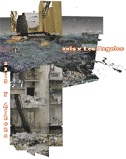
Raging by the Book
In ancient Greek comedy, parabasis named 'a part sung by the chorus, addressed to the audience in the poet's name, and unconnected with the action of the drama.' Calling themselves 'the bodies of rage and longing,' six artists and filmmakers based in the United States - Dimitri Kotsaras, Mr. Flo, Melissa Longenecker, Jennifer Nelson, Michael Wilson, and Natalie Zimmerman - have devised an ongoing, collaborative project to promote parabasis transnationally. With foci in Los Angeles and Athens, The Book of Rage and Longing stages an interrogative return to the putative birthplace of Western democracy. Viewers submit textual or visual rants, connected or unconnected with the daily unfolding dramas of wars worldwide. Unedited, these texts and images are projected on a rooftop facing the Acropolis. An 'interpretive/administrative committee' modifies these contributions, reshaping them into the titular book, segments of which a group of Greek singers then performs. Rea! d in the aftermath of this year's presidential election, these instances of parabasis have begun to seem rather more tragic than comic, as when one self-styled poet opines, 'From those who live like leeches on the people's lives,/ We must take back our land again,/ America.' - Ramsey McGlazer, Rhizome's Net Art News, November 5, 2004
Posted by jo at 10:25 AM | Comments (0)
October 15, 2004
City of Heroes
Virtual Memorial
"City of Heroes players memorialize Christopher Reeve: Memorial vigil held by players of the online superhero MMORPG honors passing of the Man of Steel"; by Tim Surette--GameSpot; POSTED: 10/12/04 02:01 PM PST
After the news of the passing of Christopher Reeve hit the airwaves, players of the massively multiplayer online role-playing game City of Heroes gathered together for a memorial for the fallen hero. Players gathered in full hero garb and saluted in tandem in memory of the man best known for playing Superman on the big screen. Reeve, who became a champion of spinal cord research following a paralyzing horse riding accident in 1995, died Monday as a result of heart failure stemming from an infection related to his paralysis. He was 52 years old.
Posted by jo at 12:47 PM | Comments (0)
October 11, 2004
Auracle
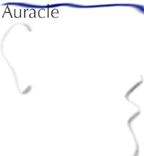
A Networked Instrument
Auracle, a voice-controlled, networked instrument on the Internet, was created over the past year at Akademie Schloss Solitude in Germany by the Auracle team (Max Neuhaus, Phil Burk, Sekhar Ramakrishnan, Kristjan Varnik, David Birchfield, and Jason Freeman--read PDF). The project is inspired by Max Neuhaus' interactive radio works from the 1960s and 1970s.
The site is now live, and you can try out Auracle at any time (you'll need a computer with a microphone). The official launch event is Friday, October 15th at Donnaueschinger Musiktage, a new music festival in Southern Germany. You are welcome to join in via the Internet by using Auracle at 2:30 p.m. Eastern Standard Time this Friday; see the web site for details.
Auracle is a networked sound instrument, controlled by the voice. It is played and heard over the Internet. To participate, simply launch Auracle in your web browser, join an ensemble, and create sounds with other participants in real time. While it takes years to learn how to control an instrument such as guitar or piano, Auracle requires no special training to play. It takes advantage of the sophisticated and flexible vocal control we all have from our ability to speak.
Your voice, however, is not the source of Auracle's sounds — it is merely a way of controlling those sounds. You play Auracle with other people anywhere in the world in groups of up to five players called Ensembles. All members of an ensemble are able to hear each other's gestures. Listen to the active ensembles in Auracle by clicking on their names. Stay with a group that you like, or create a new ensemble yourself and invite others to come and play.
Auracle is an instrument, not a piece; it is a system, not a musical composition. It has an internal structure, but it does not define or control the interaction of its participants. The architecture itself adapts over time in response to how it is used.
Posted by jo at 02:58 PM | Comments (0)
October 09, 2004
Distance Focale (Focal Distance)

Making the Virtual Real
Focal Distance is a performance cycle device where users are invited to move avatars on a grid. These actions are reproduced in a physical space by a human operator moving objects on a table. Global input provided by participants is considered a material feeding sub-device that produces various media streams. There is an ongoing discussion (in english) about this concept and some resources (images + texts mostly in french) at www.x-arn.org.
Posted by jo at 01:41 PM | Comments (0)
Warehouse Operation - v.beta.

Actions Reseaux Numeriques
Combining human and technical possibilities, the hypermedia project Warehouse Operation (GDS) by Actions Reseaux Numeriques focused on building a warehouse of various objects and materials. The technical and human possibilities, consisting of a link to a website and a warehouse established in a concrete physical space, provided the opportunity to 'enter the warehouse--with the help of the link--and see the objects it contained.
The communication mechanism was based on the circulation of commands and responses between the users and operators. Users communicated with operators--who were physically located in the warehouse--on the internet. Users sent in their orders and the operators performed responses, thereby transforming the link.
The process consisted of a sequence of specific actions, whose beginning and order the user indicates to the operator in the warehouse:
* selecting objects and taking them out of the warehouse
* transferring them to a separate zone and creating an identification document
* exhibiting and general identification
* placing them back to the warehouse.
In a separate zone a document representing the object, generally accessible with the help of the link, is presented. Any user can attribute to the observed object a meaning that he considers the most appropriate, or can present rational or imagination-based assessments and in this way create the general memory of the warehouse objects.
In this way a link between the digital and physical reality is established. The developing relation between these two forms of being makes one to take a new look at the mutual relations of humans/machines and the perception of the net-generated reality.
# Laurent Neyssensas: implementation of the project
# Yann Le Guennec: modelling/programming
# Sylvie Bourguet: project manager responsible for the conception
For more info on this project, see http://www.x-arn.org/y/wakka.php?wiki=GestionDesStocks (in French).
Posted by jo at 01:21 PM | Comments (0)
September 29, 2004
Following The Man of the Crowd
![]()
By the Fine Thread of Text Messages
Following The Man of the Crowd is a co-located, 24-hour following piece conducted by Glowlab's Christina Ray and Lee Walton in conjunction with Spectropolis: Mobile Media, Art and the City. It's a 24-hour walk in which two participants, linked by text messaging, drift separately through the city in an alternating pattern according to the movements of strangers. Based loosely on Edgar Allen Poe's short story "The Man of the Crowd" and inspired by Vito Acconci's 1967 "Following Piece," Ray and Walton have developed a collaborative performance that involves following strangers over a 24-hour period. Working as a team connected only through text messaging, the two will alternate turns following selected strangers through New York City.
Date: October 2 - 3, 2004; Time: 10am - 10am; Location: starting at Doma Café, 17 Perry Street at 7th Avenue; end location unknown. Participate! Sign up at Dodgeball.
Posted by jo at 04:52 PM | Comments (0)
September 21, 2004
Instruction works

Tell me what to do
100(11) instruction works is a project for the 7a*11d International Performance Art Festival in Toronto, Canada, from October 20-31, 2004.
For this project, iKatun will accept submissions of instruction works from collaborators in Toronto and around the world via this website. The website will be open for submissions until October 31. During the festival, iKatun will choose one instruction work per day to realize/enact/perform/install. These performance-enactments might take place at the festival or anywhere else in Toronto.
iKatun will perform/enact at least 2 versions of every instruction chosen. We may spend the entire day creating different variations of the same instruction piece to explore the space between script and action, author and performer, festival space and public space. iKatun is also collaborating with InterAccess, an innovative electronic media arts center in Toronto, for the webcasting, streaming video and video documentation of this piece.
Posted by jo at 10:18 AM | Comments (0)
September 18, 2004
Chased in Brighton and Barcelona
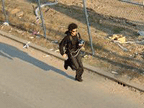
Can You See Me Now?
(from AudioHyperspace of SWR2 RadioART: Hörspiel by Sabine Breitsameter.) Highly recommended: For those who want to experience Blast Theory's live and online game "Can You See Me Now", note the following dates: From 27 September to 1 October 2004, you can take part - corporeal - in Brighton, UK, and from 28 to 31 October 2004, join the game in Barcelona during the "ArtFutura"-festival. Those who cannot make it to these places: It is also fun to join the game online. [more]
Posted by newradio at 10:48 AM | Comments (0)
The web is a living organism project
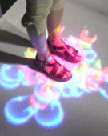
symbiotic relationships
the web is a living organsim project is a net.art installation in both hyper and physical space. It is trying to examine the relationship between internet users, information and the internet itself in the same way we look at the relationship between blood cells, Oxygen and the body itself. By this equation comes a great opportunity of discovering a new model for politics- based on the idea of Symbiotic Relationships. The interactive composition is an examination of microscopic activity inside an internet tissue.
The participants/users are invited to take part in the installation's game system. [1] Each participant/user types in a search string he would like to discuss. [2] When stepping into the interactive stage, he is joined by a microbe. The microbe is a digitally-crafted animated avatar based on the aesthetics of microbiology. Each microbe projects a unique sound and has a unique style of movement. The microbe is powered by a search engine (at this stage we have integrated Google, Altavista and Lycos). [3] In physical space, the interactive stage serves as a screen for a projector that beams from its top. The Microbe is projected upon the user and follows his movements. The search string is projected on the floor right after being submitted. [4] Stepping on text on the floor with the microbe sends the text to the microbe's search engine and returns the title of the first search result. The new text replaces the old ones and become new triggers for a search. The composition creates a conversation between users using search engines combined with a live interactive music score. [5] The work will be available online (controlled by the users mouse&keyboard) constantly like any other net art work but will reach it's full potential in the form of realspace installation that interacts both online users, activating their microbes through the use of the mouse, and physical participants, moving their microbes by the movement of their bodies.
[see online interactive demo for a better grasp of the composition]
The project deals with issues within the discourse of net-ethics, but tries to use the artistic method to create an experience which is theoretically challenging on one hand and pure fun on the other. It is using a physical computed tracking system conjunct with live internet search-engine activity, interactive visuals and sounds and a game system to deliver the concept.
Posted by jo at 08:00 AM
September 15, 2004
Elastic Test
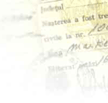
eliminate undesirable foreigners
Immigration authorities around the world need our help!! Use this website to contribute your ideas or proposals for an elastic test that can be devised to eliminate undesirable foreigners.
Immigration Statutes around the world are generally written using vague or abstract notions such as good moral character. It is the messy job of the courts to make such abstractions concrete, to objectively test and measure the moral character of a foreigner, and to eliminate arbitrary or contingent factors from the immigrations process. Join us in doing our part. We will invent, develop and implement numerous elastic tests, which can help the authorities contain and eliminate undesirable foreign bodies. Some of these tests will then be executed on our foreign test subject in a series of live and webcast performances.
Robert Lawrence (UNIMAS, Sarawak, Malaysia and USF, Tampa, Florida) wrote to us about this project on July 22, 2004. He said:
This project from the beginning has had an open door for participation through the web, but currently we are looking for ways to decentralize the project in more significant ways. Some issues related to this on which we are cogitating:
1. Given that our interventions require location-specific collaborations, how can the role of trans-local media, networks or distribution channels be re-imagined?
2. How can the project become less centralized? What are some models of de-centered cooperation we can try to implement – what is the advantage of a distributed network of creators in this case?
3. How might considerations of distribution and re-usability expand the current scope of the work?
4. One of the important aspects of the work is initiating and facilitating new relationships between local communities and structures – is this sustainable?
As we continue to evolve this project and develop ways to ‘turn it loose’ we are very interested in engaging in dialogue, theoretical and practical collaborations, and discovering and developing new models for distance collaboration.
Another of Lawrence's projects Un Message, Evidemment was blogged here.
Lawrence had this to say about it:
"The ‘story’ will be told entirely in the recorded messages that the foreground characters are listening to on their cell phones. These stories will be selected, synthesized and/or adapted from the contributions at this website and other venues. These stories will be gathered in several ways. Whenever the film in progress is shown at festivals, workshops or any other venue people will be asked to contribute storys by phone, sms, email. Participants will be encouraged to engage the performance on any number of levels.
We are also seeking opportunities to workshop the film doing shooting or writing. The “completed” film provides another dimension of the viewer/performer dynamic. At every stage of production, post-production, and presentation the ‘final form’ of the film will be negotiable. It will be shown in a user interactive form on the web, and in ‘concrete,’ though varying, versions in festivals and the usual film art venues – It may not ever appear in the same form twice."
Posted by jo at 08:46 AM | Comments (0)
September 08, 2004
Transmute
emotional and spatial residue
 Intimate Transactions: First Proof of Concept by Keith Armstrong + The Transmute Collective (c) 2003: "A performing body carves through the space, energizing & sculpting the environment in which it inhabits. Stillness is very important. The moment before & after a movement is crucial. The emotional & spatial residue left behind from each action is where the drama lies." Lisa O'Neill
Intimate Transactions: First Proof of Concept by Keith Armstrong + The Transmute Collective (c) 2003: "A performing body carves through the space, energizing & sculpting the environment in which it inhabits. Stillness is very important. The moment before & after a movement is crucial. The emotional & spatial residue left behind from each action is where the drama lies." Lisa O'Neill
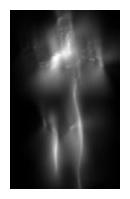 And, from the introductory essay by Linda Carroli (c) 2004: "Presently, in Brisbane, 'mixed reality' works...are emerging as a focus for artistic and creative industries research with several projects currently in development. Transmute's core ideas were presented in an "evolving audio-visual experience driven by a highly tactile interface that requires active physical engagement. Individual participants...navigate by either drifting or traveling actively within a landscape comprised from ghostly bodies, dynamic texts and emergent sound." To be more specific: The work is comprised of several elements including a 'body shelf' designed by Zeljko Markov which is the interface; interactive imagery comprising a text-based non-narrative drawing on the story Smog by Italo Calvino and an interactive imagescape based upon a single, ambiguous body image (pictured left) which dissolves, morphs and transforms between states of sublime calm and pixillated agitation; and a fluid interactive soundscape designed by Guy Webster (and his collaborators Woods and Jenkins). Participants are literally shelved on the body shelf in which a number of sensors are positioned to correspond with their hands, feet and back."
And, from the introductory essay by Linda Carroli (c) 2004: "Presently, in Brisbane, 'mixed reality' works...are emerging as a focus for artistic and creative industries research with several projects currently in development. Transmute's core ideas were presented in an "evolving audio-visual experience driven by a highly tactile interface that requires active physical engagement. Individual participants...navigate by either drifting or traveling actively within a landscape comprised from ghostly bodies, dynamic texts and emergent sound." To be more specific: The work is comprised of several elements including a 'body shelf' designed by Zeljko Markov which is the interface; interactive imagery comprising a text-based non-narrative drawing on the story Smog by Italo Calvino and an interactive imagescape based upon a single, ambiguous body image (pictured left) which dissolves, morphs and transforms between states of sublime calm and pixillated agitation; and a fluid interactive soundscape designed by Guy Webster (and his collaborators Woods and Jenkins). Participants are literally shelved on the body shelf in which a number of sensors are positioned to correspond with their hands, feet and back."
Posted by jo at 11:40 AM | Comments (0)
September 04, 2004
Work by Don Ritter
Physical Aesthetics
"Unlike art from previous times, interactive art considers the viewer’s body as an integral component of the experience; the quality of this experience is measured by the term physical aesthetics, being the pleasantness or unpleasantness of the physical experience involved with the control of an interactive experience. The involvement of a viewer in an artwork could be viewed as being more democratic than the autocratic experiences presented by older art forms." Read the full interview.
![]()
Vox Populi endows anyone with leadership, regardless of their personal wealth, family origins, or political connections. A video projected crowd chants "speech, speech" and encourages visitors to speak from a lectern. When a visitor speaks through the microphone, the voice is amplified and political speeches begin scrolling on a teleprompter located within the lectern. In response to a speaker’s voice, the crowd reacts with varying degrees of support and repulsion.
Other works by Don Ritter (Real movies available on site):
The Technophobe and the Madman: Internet-2 distributed musical
telecommunications video-music performance, 2001; 12 channels audio and 6 channels full screen video connection between Frederick Loewe Theatre, New York City and iEAR Studio, Troy, New York; collaborative performance: performers share audio and video between 2 cities.
Performance Telematique: Interactive telecommunications performance between two cities, 1993; PictureTel system, two channels full screen video and two channels audio Obscure, Quebec City, and McLuhan Program, University of Toronto, Canada (500 miles, 800 km).
Nervous Orpheus: Interactive telecommunications performance between two cities, 1994; PictureTel system, two channels full screen video and two channels audio; Vancouver and Toronto, Canada (2800 miles, 4500 km).
Posted by jo at 11:34 AM | Comments (0)
September 02, 2004
ILoveBees Breaks Into the "Real World"

Beekeeping Mobs
Posted by vpisteve at 11:27 PM on Alternative Reality Gaming Network: August 24, 2004. It all began at 6:07 am PDT. Payphones from coast to coast began to ring. A twelve-hour wave of carefully planned phone calls began to sweep the country, and Halo fans, Beekeepers, the Media and the just plain curious were there to try to intercept them.
This morning, we got to find out what was in store for those who were following the events of Dana and the rogue AI attacking her aunt's website. While many were expecting Halo 2 demo disks, what they got instead was one of the largest, most complicated distributed interactions in ARG history. Hundreds of people around the country descended upon over 200 locales, working as a team to answer phone calls correctly, in order to unlock a series of audio clues.
While we don't have the space here to go into the story itself (for that, check the links below), here's how the whole thing worked: Players were presented with a web page that listed 30 blocks of seven GPS coordinates, which turned out to represent payphones around the country. Each location had a specific time attached, and each block of seven locations had a common password. As the phones started ringing at the exact corresponding time, players realized that they must respond correctly to the voice on the other end in order for something to happen. It was determined that players needed to provide the nickname for the AI that was calling them, plus the password listed for their location. If successful, the web-page immediately updated, indicating success. Two successful responses per group of seven then resulted in an audio file being unlocked. Players successfully unlocked 22 of 30 files the first day, with another chance to unlock the remaining ones every 24 hours. These audio files, when assembled, are revealing a fascinating story.
And this is only the beginning!
Forums and IRC channels broke all records today. The main chat room, #beekeepers, peaked at over 300 users at one point. In addition, the press is taking notice of what's going on. Word is that G4TV's Pulse will be airing a story about ilovebees this Friday, so stay tuned.
Here's a video of one event in Georgia. (6.7 MB)
Unfiction Ilovebees Forums
Guide
Quickstart
Wiki
Chat
Plot Timeline
Photo credits
Berkeley: Stitch
Burbank: MrBabyMan
See also This Week in ARGs: Flash Mobs of Beekeepers?? and I Love Bees.
Posted by jo at 10:27 AM | Comments (2)
August 23, 2004
Dissension Convention
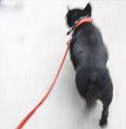
A Transatlantic Collaborative
Multimedia Protest Jam
Dissension Convention will coincide with the Republican Convention in New York. 10 pairs of net/digital artists from the Americas and Europe will create live, online multimedia performances. These will be projected at RNC NODE Postmasters Gallery, as well as by other appointed NY platforms in 'store windows, bars.'
5 days of live mix performances, online in real-time from 29th August-2nd September between 12noon and 6pm (NY time) via Furtherfield's VisitorsStudio.
If you are viewing from home you can visit versions mirrored on the artists' websites (check project URL for updates).
* If you wish to mirror this event on your site please target this file http://www.furtherstudio.org/live/dissensionconvention.swf
Programme Participants:
Sunday 29th August
4-7pm NY (9-12pm BST) *Maya Kalogera & Marc Garrett*
7-10pm NY (12-3am BST) *Moport.org & Glowlab.org*
Monday 30th August
4-7pm NY (9-12pm BST) *Chris Webb & Sim (Soy.de)*
7-10pm NY (12-3am BST) *Lewis Lacook & Alan Sondheim, Sheila Murphy & Jason Nelson*
Tuesday 31st August
4-7pm NY (9-12pm BST) *Helen Varley Jamieson & Karla Ptacek*
7-10pm NY (12-3am BST) *Joseph and Donna McElroy*
Wednesday 1st September
4-7pm NY (9-12pm BST) *Neil Jenkins & Roger Mills*
7-10pm NY (12-3am BST) *Digitofagia vs. Autolabs*
Thursday 2nd September
4-7pm NY (9-12pm BST) *Michael Szpakowski & Ruth Catlow*
7-10pm NY (12-3am BST) *Ryan Griffis & Mark Cooley*
Postmasters Gallery is creating RNC NODE, a way-station, serving as a physical node of an ad-hock public broadcasting, a system of online, real time protest performances and alternative news actions. All online streams will also be output in local bars and projections from windows. Dissension Convention will be part of this programme.
DissensionConvention is a Furtherfield project.
Posted by jo at 10:06 AM | Comments (0)
Dissension Convention

A Transatlantic Collaborative
Multimedia Protest Jam
Dissension Convention will coincide with the Republican Convention in New York. 10 pairs of net/digital artists from the Americas and Europe will create live, online multimedia performances. These will be projected at RNC NODE Postmasters Gallery, as well as by other appointed NY platforms in 'store windows, bars.'
5 days of live mix performances, online in real-time from 29th August-2nd September between 12noon and 6pm (NY time) via Furtherfield's VisitorsStudio.
If you are viewing from home you can visit versions mirrored on the artists' websites (check project URL for updates).
* If you wish to mirror this event on your site please target this file http://www.furtherstudio.org/live/dissensionconvention.swf
Programme Participants:
Sunday 29th August
4-7pm NY (9-12pm BST) *Maya Kalogera & Marc Garrett*
7-10pm NY (12-3am BST) *Moport.org & Glowlab.org*
Monday 30th August
4-7pm NY (9-12pm BST) *Chris Webb & Sim (Soy.de)*
7-10pm NY (12-3am BST) *Lewis Lacook & Alan Sondheim, Sheila Murphy & Jason Nelson*
Tuesday 31st August
4-7pm NY (9-12pm BST) *Helen Varley Jamieson & Karla Ptacek*
7-10pm NY (12-3am BST) *Joseph and Donna McElroy*
Wednesday 1st September
4-7pm NY (9-12pm BST) *Neil Jenkins & Roger Mills*
7-10pm NY (12-3am BST) *Digitofagia vs. Autolabs*
Thursday 2nd September
4-7pm NY (9-12pm BST) *Michael Szpakowski & Ruth Catlow*
7-10pm NY (12-3am BST) *Ryan Griffis & Mark Cooley*
Postmasters Gallery is creating RNC NODE, a way-station, serving as a physical node of an ad-hock public broadcasting, a system of online, real time protest performances and alternative news actions. All online streams will also be output in local bars and projections from windows. Dissension Convention will be part of this programme.
DissensionConvention is a Furtherfield project.
Posted by jo at 10:06 AM | Comments (0)
August 21, 2004
ultra modern - very social
Another Motherboard project, ultra modern - very social is a streaming theatre concept for 2002 and beyond. This space is dedicated to the pursuit of experimental theatre which is somehow modulated and mediated by the intermediary influences of the net, but may also involve communcation appliances such as telephones, mobile phones, walkie-talkies, radio, etc. Our emphasis is on improvisation and experimentation where "here and now" and "there and then" are relative expressions in collaborative networked spaces.
Posted by jo at 11:31 AM | Comments (0)
August 20, 2004
Motherboard
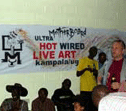
Ultra Hot Wired Live Art
In February 2003 a group of artists from Norway, Germany, Holland, Canada, England and Austria, working together on a project called Ultra Hot Wired Live Art initiated by Motherboard and BEK traveled to Kampala with 15 powerful Macintosh computers in their baggage. The aim was to create African computer art in an attempt to answer Brian Eno's question: "How can you africanize a computer"?
In collaboration with over twenty artists and musicians in Uganda, the artists held a workshop to share competencies in music and art production that utilize digital tools and the Internet. This was to develop a social and technical infrastructure for the creation of networked performances and future collaborations. More info
Posted by jo at 04:10 PM | Comments (0)
August 17, 2004
Chiasma

03 Biennial of Performance Art
Chiasma--a seventy-two hour, online performance art exchange--was a collaborative project between three international arts organizations: grunt gallery (Vancouver, Canada), Imperial Slacks (Sydney, Australia) and Folly (Lancaster, UK). Chiasma utilized live web streaming technology to investigate the potential of international exchange and collaboration through the web. Three artists--Rebecca Belmore, Lea Donnan, and Hester Reeve--were commissioned to create a piece of work specifically intended for live web cast. The performance was viewable virtually (as a screen on the web site) as well as remotely in six partner galleries spaces across the world.
Posted by jo at 05:10 PM | Comments (0)
August 15, 2004
carnivore clients

what lies beneath (the net)
'Carnivore is a controversial program developed by the U.S. Federal Bureau of Investigation (FBI) to give the agency access to the online/e-mail activities of suspected criminals' (from how stuff works. more info)
Rhizome's CarnivorePE, inspired by the original, allows artists to use all Internet traffic (email, web surfing, etc.) on a specific local network for their projects.
The free, downloadable software has been used to make visual, aural and physical computing projects that respond to, or dialogue with, the network, by some of the most prolific digital artists, including Jonah Brucker-Cohen, Golan Levin and Lisa Jevbratt (for more works and links, see the CarnivorePE page on rhizome). What else can we perform?
Posted by at 11:16 AM | Comments (0)
August 12, 2004
SimpleTEXT
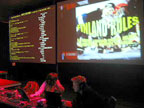
zeitgeist performing
SimpleTEXT is a collaborative audio/visual public performance that relies on audience participation through input from mobile devices such as phones, PDAs or laptops' (from simpletext website). This installation, created by mixing and matching older software projects by Jonah Brucker-Cohen, Tim Redfern and Duncan Murphy, accepts real-time SMSs and text messaging in order to create live music and visuals. The software first parses the text, which dictates the music, then uses these messages to rhythmically drive speech and picture synthesizers (direct from the web using google's image search). Although I've never seen it, my guess is that the most interesting part of this performance would be seeing a dialogue emerge between the piece, the performers, the audience SMSing in the space, and the audience texting from the web. A zeitgesit of ASCII that reiterates.... iterate.... iterative.... (ad nauseum) (Posted by Nathaniel Stern)
Posted by at 02:57 AM | Comments (0)
August 01, 2004
Tele-Actor
Hello all:
I am really amazed by the amount of activity on the blog -- looks like we've hit on a potent topic.
One project I want to add to the mix is Ken Goldberg's Tele-Actor , which is now about two years old. People online vote on what they want an actor to do. That actor is equiped with a wearable computer, including cams, mics, etc.
From the website: "The "Tele-Actor" is a skilled human with cameras and microphones connected to a wireless digital network. Live video and audio are broadcast to participants via the Internet or interactive television. Participants not only view, but interact with each other and with the Tele-Actor by voting on what to do next. Our "Spatial Dynamic Voting" (SDV) interface incorporates group dynamics into a variety of online experiences."
It seems to me that many of the pieces mentioned so far not only are networked or distributed in nature, but also utilize non-linear narratives that have not been been predetermined. Coincidence?
Brooke
Posted by at 10:04 PM | Comments (1)
July 31, 2004
Mobile Culture-Scratching

by Julie Andreyev, at New Forms Festival 2003, consists of 3 cars fitted with video projection on the rear windshield. Each car has a theme determined by the character of the car, and by characteristics of the host city where the fleet is mobilized. The choice of cars for the project reflects the specific car culture of the host city expressed through customization and branding.
Mobile Equipment
The cars are set up with equipment to allow for mobile video downloading, and video mixing using data from the car. While the fleet is mobile, videographers in the downtown site are creating videos for projection on the cars. The themes are used as a guide for them to create footage of the activities of a city's inhabitants.
Networked Process
This footage is uploaded by the videographers onto a web server. Then, the footage is downloaded by the cars as they drive by WIFI (wireless internet) download sites. A sound artist records ambient sound using a microphone held outside the window of one of the cars, mixes this, and plays it back using an FM transmitter. Nearby cars can tune into our frequency and hear the audio sampling. Each car is equipped with a sensor and software patch that interprets data from the car.
Software Interface
For example, one sensor reads data from the engine speed. This data causes a kind of 'jittery' effect to be applied to the video. The faster the car revs, the more 'jittery' the video. In this way, not only are the inhabitants of the city portrayed, but also the car is expressed in the video. After the performance, the cars can be driven into a gallery space where they can be set up to project their archive of the evenings' videos.
Mobile Portrait of the City
The goal of this project is to create a mobile portrait of the city through video and audio sampling of real time events. VJ-Fleet relies on current VJ (or video jockey) culture and the hosting city's local car and social culture. For each performance the project is customized and scaled to reflect the particular nature of the host city.
Posted by michelle at 06:37 PM
From Hactivism to Tactical Media
Hacktivism (electronic resistence within the network) has fed into tactical media: urban, mobile performance events.
Being 'wired' has become mobile, ubiquitous, sentient, pervasive, OMNICIENT monitored, computing. As we desire our movies and games to be more realistic - hyper-realistic - we now inhabit our computer-mediated, if not computer-generated worlds. We interact through joysticks that exert pressure to our response. We track oursleves with GPS-equipped devices, we pass and receive data streams: enveloped, engaged, connected, linked.
There's a surge in public events - happenings - Kaprow's "Environmental Theatre" of the collective, enabled by wi-fi technology and taken to the streets: MOBILized.
From: The ABC of Tactical Media by David Garcia and Geert Lovink
Tactical Media
"In fact we introduced the term tactical to disrupt and take us beyond the rigid dichotomies that have restricted thinking in this area for so long: dichotomies such as amateur vs professional, alternative vs mainstream. Even private vs public. Our hybrid forms are always provisional. What counts are the temporary connections you are able to make. Here and now, not some vaporware promised for the future. But what we can do on the spot with the media we have access to. Here in Amsterdam we have access to local TV, digital cities and fortresses of new and old media. In other places they might have theater, street demonstrations, experimental film, literature, photography. Tactical media’s mobility connects it to a wider movement of migrant culture."
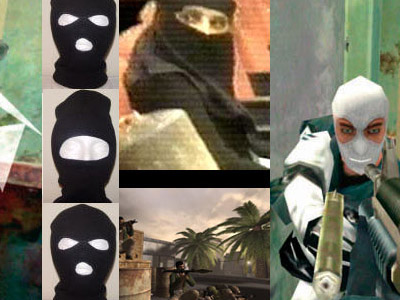 O.U.T.: Operation Urban Terrain :a live action wireless gaming urban intervention
O.U.T.: Operation Urban Terrain :a live action wireless gaming urban intervention
When: August 30, during the Republican National Convention, New York City.
Two women in gear are on the ground. One with a laptop and the other with a projector pointing onto building walls in 3 key locations in the city. They are connected through a mobile wireless bicycle to an online team of five game players located around the world. They intervene on servers in a popular online military simulation game with performance actions carried out by the whole team.The live projections in the city can also be viewed through a web cam on the OUT website.
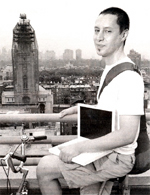 Magicbike is a mobile WiFi (wireless Internet) hotspot that gives free Internet connectivity wherever its ridden or parked. By turning a common bicycle into a wireless hotspot, Magicbike explores new delivery and use strategies for wireless networks and modern-day urbanites. Wireless bicycles disappear into the urban fabric and bring Internet to yet unserved spaces and communities. Mixing public art with techno-activism, Magicbikes are perfect for setting up adhoc Internet connectivity for art and culture events, emergency access, public demonstrations, and communities on the struggling end of the digital-divide.
Magicbike is a mobile WiFi (wireless Internet) hotspot that gives free Internet connectivity wherever its ridden or parked. By turning a common bicycle into a wireless hotspot, Magicbike explores new delivery and use strategies for wireless networks and modern-day urbanites. Wireless bicycles disappear into the urban fabric and bring Internet to yet unserved spaces and communities. Mixing public art with techno-activism, Magicbikes are perfect for setting up adhoc Internet connectivity for art and culture events, emergency access, public demonstrations, and communities on the struggling end of the digital-divide.
Posted by michelle at 01:51 PM | Comments (1)
Historically Locating Distributed Performance
2004.04.05 Helen Thorington, writing about an early conference proposal:
The following are examples of distributed performances:
Finding Time (Jesse Gilbert, 2000). Finding Time linked performers on six continents in a series of live musical events, each an hour’s duration.
World Wide Simultaneous Dance (1998, Laura Knott). The project took place simultaneously in twelve countries.
In both examples the performers played to audiences in their performance spaces and to a worldwide Internet audience by means of especially created websites.
I then move on to a brief history, beginning with Kaprow's "Hello Hello" in the mid-60s--about which I can find very little information other than that it linked five sites in a television event. And on to Kit Galloway and Sherri Rabinowitz.
But the history is the not the question for me. Internet works resonate with historical issues. But what I'm beginning to think as I research for the conference is that we may already have witnessed the passing of the (pre)structured presentation of large-scale performance works--I keep thinking, for instance, that while Adrift (1997-2001) was very different from other works produced at its time, it was also very traditional. It was a work by three artists (the senders), in which its audiences had no agency at all--Like radio, like television, they were cast in the role of "receivers."

From the Adrift performance
Now...when did it happen?...the Internet environment is in a far more participatory stage and people-interest runs to works/platforms/
environments in which the former viewer can play an active role. Which may begin to explain why there are really not very many interesting large performance works being produced at this time. Not only is the technology still difficult but the environment is no longer congenial.
Or am I wrong? And if not, what does this do for/to our conference?
I'm going to think about this for awhile. Right now my only thought is that if this is so, the conference itself should reflect it and include the many twists and turns performance has taken in the last years.
Posted by michelle at 01:22 PM | Comments (0)
July 29, 2004
Networked Local Performance
Dialtones: A Telesymphony
Dialtones, as described on Golan Levin’s web site, "is a large-scale concert performance whose sounds are wholly produced through the carefully choreographed dialing and ringing of the audience's mobile phones. Because the exact location and tone of each participant's mobile phone can be known in advance, Dialtones affords a diverse range of unprecedented sonic phenomena and musically interesting structures."
Preparatory to the concert, members of the audience register their wireless telephone numbers at secure Web kiosks located in the performance space. In exchange for this information, they then receive seating assignment tickets for the concert venue. New "ringtones" are then automatically downloaded to their handsets. During the concert, a small group of musicians perform the phones en masse by dialing them up with a specially designed, visual-musical software instrument. "Because the audience's positions and sounds are known to the Dialtones computer system, the performers can create spatially-distributed melodies and chords, as well as novel textural phenomena like waves of polyphony which cascade across the crowd; these musical structures, moreover, are visualized by a large projection system connected to the performers' interfaces. Towards the end of its half-hour composition, Dialtones builds to a remarkable crescendo in which nearly two hundred mobile phones peal simultaneously."
Posted by newradio at 06:26 PM
Networked Local Performance
Flip Flop
Flip Flop comprises a group of motion poets, cyborgs, and sound, video and net-artists who collaborate on ‘site-specific remote connection theater performances’ that, in their words, "challenge boundaries between audience and performer, on-stage and off-stage, the venue and the street outside."
For instance: the audience is invited to a party where, over the course of the evening, one of the partygoers (actor and motion poet Ajay Naidu) emerges as a performer, and the audience gradually realizes that it is participating in theater. As the performer shifts between private conversation and "narrative outbursts," the event shifts in mood and form.
Simultaneously, a performer, equipped with a wearable multimedia-streaming computer roams the neighbourhood. The route is choreographed to synchronise with the performers story, and a live "point-of-view" video feed (as well as audio) from the wanderer is relayed by wireless broadband to the performance venue. Flip Flop was performed in July, 2002. Read a report on Live Streaming as Dramaturgy.
Posted by newradio at 06:17 PM
July 28, 2004
Networked Local Performance
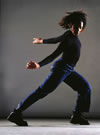
Texterritory v.2.3
Texterritory is a playground performance concept in which the audience has control over physical bodies (dancers and musicians) along with lighting, music and midi system at specific times during the performance. Their influence alters the direction of each performance. Texterritory was performed in May 2003 at the Mumford theatre in Cambridge (UK). Its plot is described as follows:
"Grace, a Legal Secretary arrives home early to prepare herself for her first real date with Jerome. She’s just bought a new pair of shoes to go with one of those outfits. At the moment she drops her keys on the kitchen table, the text arrives from J — he has been delayed but will be there soon. From optimism to despair from knowing to kneeling in prayer, Grace's dilemmas and insecurities unfold as she figures out what to do with this unexpected time on her hands. Together with the influence of the audience she decides exactly what to wear, who she might call if he doesn't show up as well as trying to reassemble a photofit image of what Jerome really looks like."
The multi-media, non-linear narrative "is told through texting/photo-messaging, dance, music, spoken word and animation."
Texterritory makes use of a mobile gateway created by new media company Digit. Computers that tally the results of text messages sent to the audience and derives instructions for the performers from them. It thus gives the audience a certain amount of interactive control over the physical bodies, music and lighting at specific times during the performance.
Posted by newradio at 05:52 PM | Comments (0)
July 27, 2004
Networked Streaming Audio Performance
forwarded by Shu Lea Cheang -
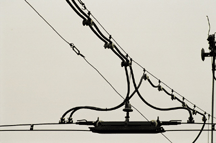
TRAMJAM - VIENNA RUSHHOUR by Mumbai Streaming Attack
A multi-track-multi-driver mix hub streaming jam session of Vienna city vibe, orchestrated in sync with the city's tram routing schedule.
TRAMJAM is a project that Shu Lea Cheang started when teaching networked performance at Zurich's HGKZ. The work will go on to other cities where there are tramlines. The next stop- Rotterdam and the Deaf Festival ’04 Affective Turbulence: The Art of Open Systems in November.
Thanks for sharing this event Shu Lea.
Would you comment on your involvement in this project?
Can you, for instance, compare the Zurich and Vienna experiences?
Is there online documentation of the Zurich events that you can direct folks to?
Collaborative and collective process is really important to us (blog & conference organizers) and we see it as a core component of networked_performance - both within groups developing work, and with the inclusion and contribution of viewers/users/participants/ to the work. The website notes that 'the Mumbai Streaming Attack study group expands to include local participants for each performance'. Do you mean in the respect that participants can upload sounds and contribute in that manner - or do you also connect with local artists for implementation/augmentation of prior iterations of the work? Would you talk about the technology and process involved?
Would you give us an overview of your personal practice and describe how this particular project is a continuation of that or has grown out of your former practice? Would you comment on your specific involvement in this project?
ABOUT THE WORK: Each driver/jammer conceives and collects soundfiles for a chosen tram route, joins together on location and online to perform collective impressions of Vienna city limits, whose tramlines connectivity forms the city's transport mainframe.
Along each tram route, personal, social and political association are considered for the composition of the specific sound files. Local sound artists, hackers, jammers are invited to “drive” and “mix” the (sound)stracks. The city's tram info broadcast cuts in to inform the happenings by the minute as the trams cable through the cities.
TRAMJAM also extends its programming to involve the city's mobile community. Through mobile devices, the transporting public are invited to send in voice/sound/texts messages for the mix.
The live performance is streamed live on the internet and on local radio. We invite the travelling public to listen in with their travelling radios. The orchestration of the tramlines/tramtracks is self-directed syncopation with open source soundfiles that are accessible to all participants.
Mumbai Streaming Attack is a networked performance study group currently based at SNM/HGKZ in Zurich. The group first performed TRAMJAM-ZURICH RUSHHOUR for broadcast at reboot.fm (Berlin) in February, 2004. The group's members expand to include local participants for each tram city performance.
Posted by michelle at 01:58 PM | Comments (2)
July 22, 2004
Art Mobs
Art Mobs: Can an online crowd create a poem, a novel, or a painting? Or, "Just how inventive can an anonymous group of people be?" You might want to check this one out. Clive Thompson looks at James Surowiecki’s new book, "The Wisdom of Crowds: Why the Many Are Smarter Than the Few and How Collective Wisdom Shapes Business, Economies, Societies and Nations". Surowiecki argues that "under the right circumstances, groups are remarkably intelligent, and are often smarter than the smartest people in them."
You might also want to check out an earlier book, Smart Mobs by Howard Rheingold. There's a weblog (started in '02, I think) on the site.
Posted by newradio at 11:21 AM | Comments (0)

